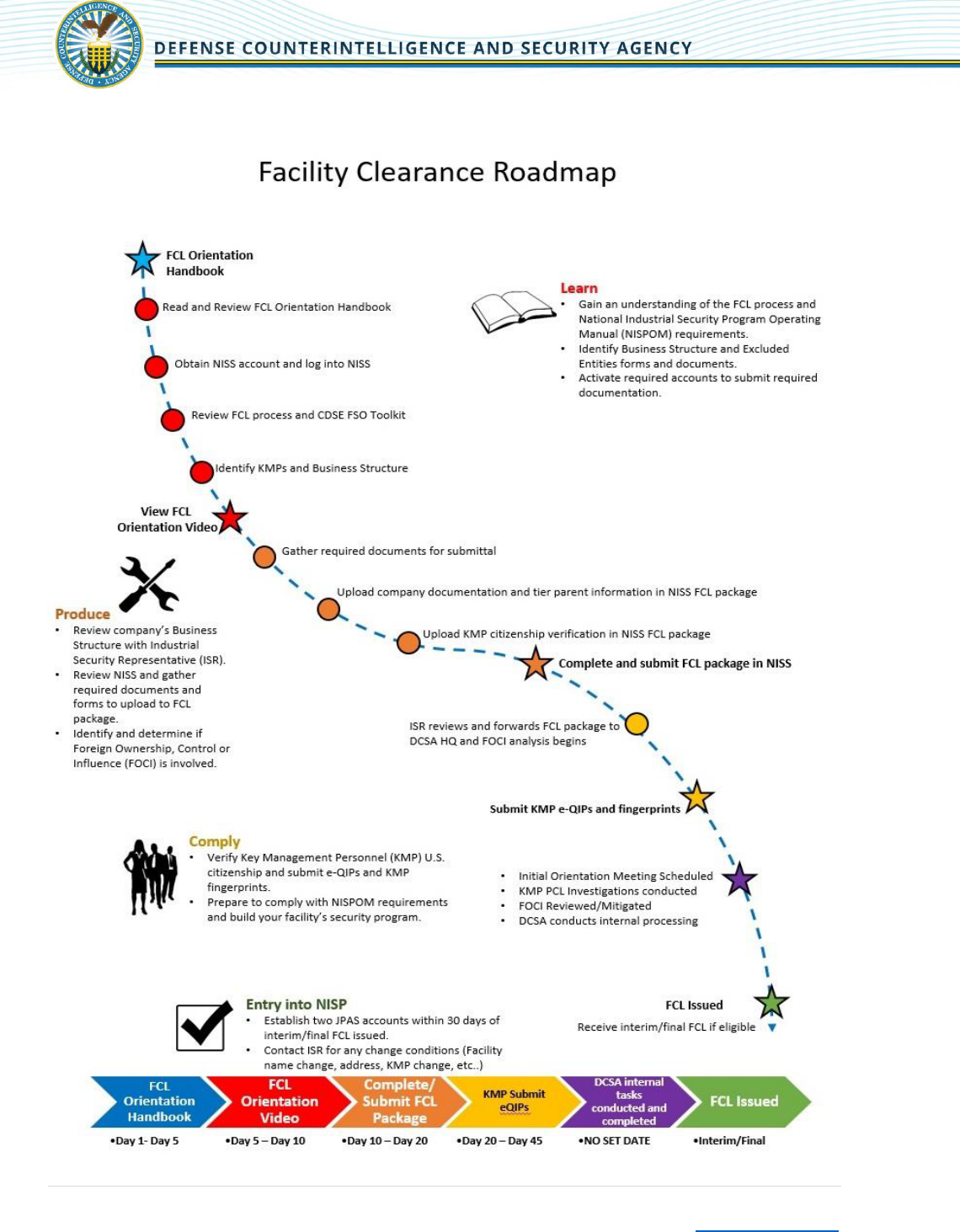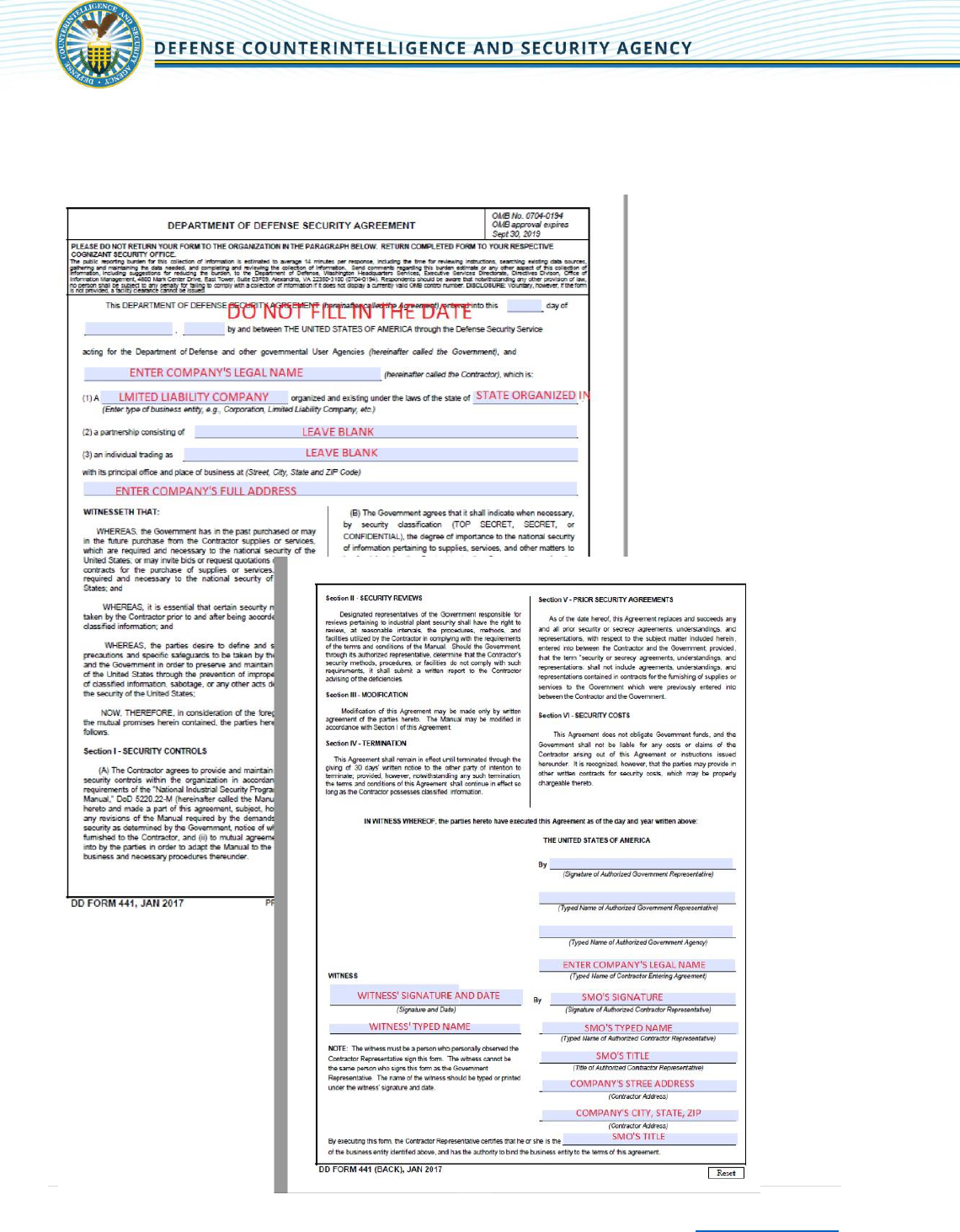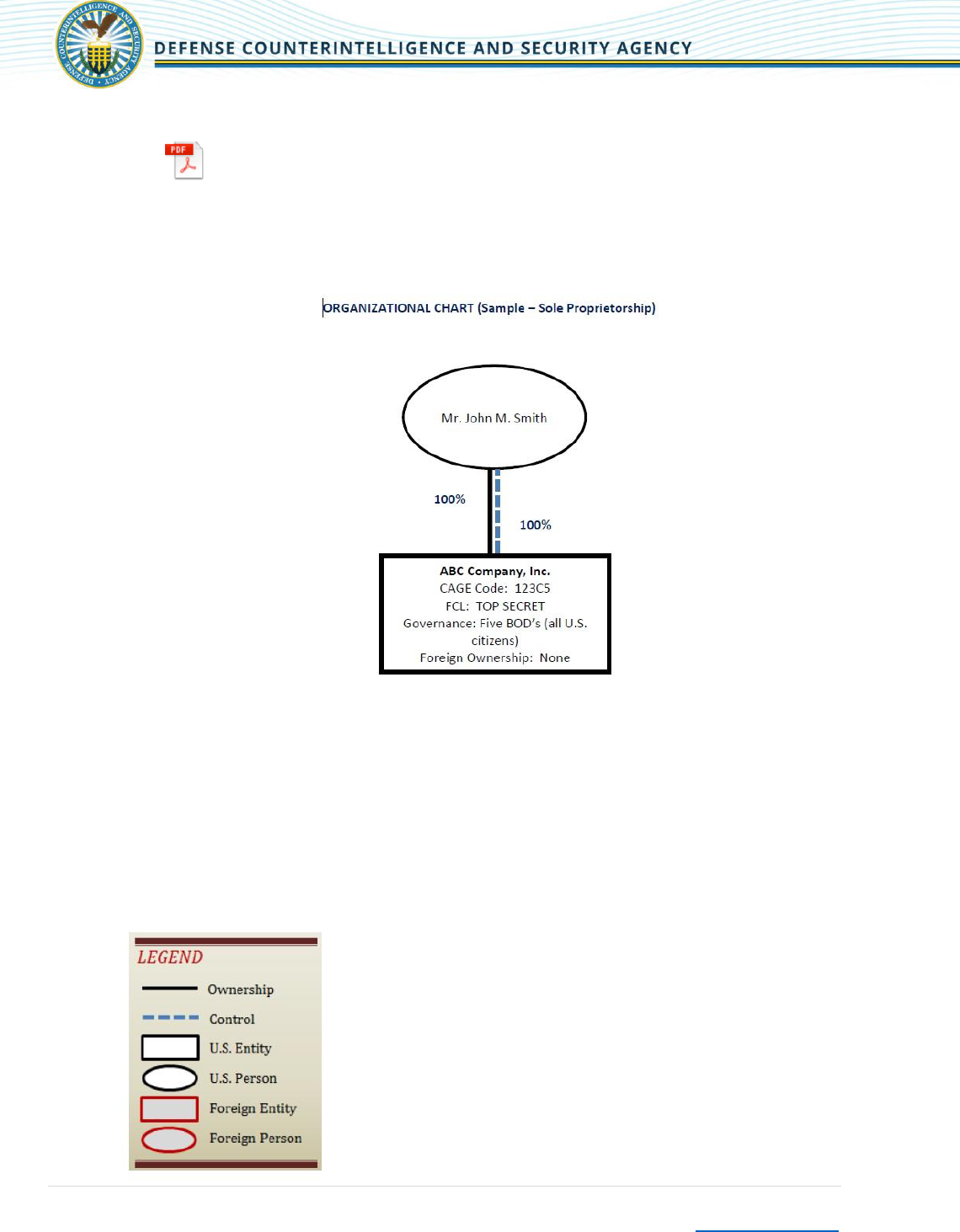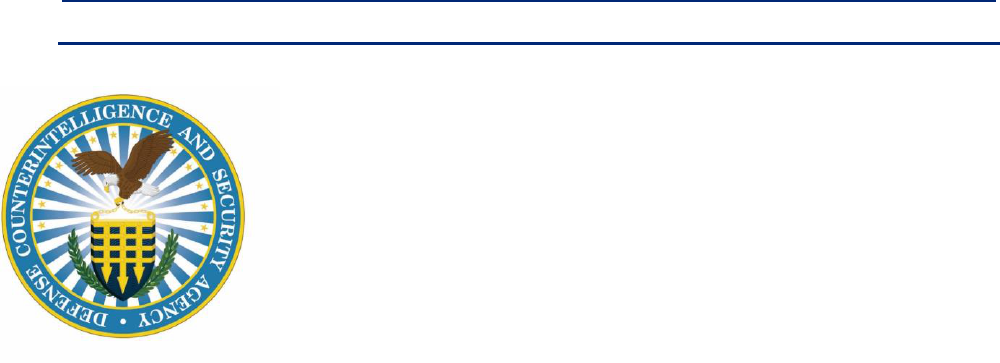
Defense Counterintelligence and
Security Agency
Critical Technology Protection
Facility Clearance (FCL) Orientation Handbook
March 2021
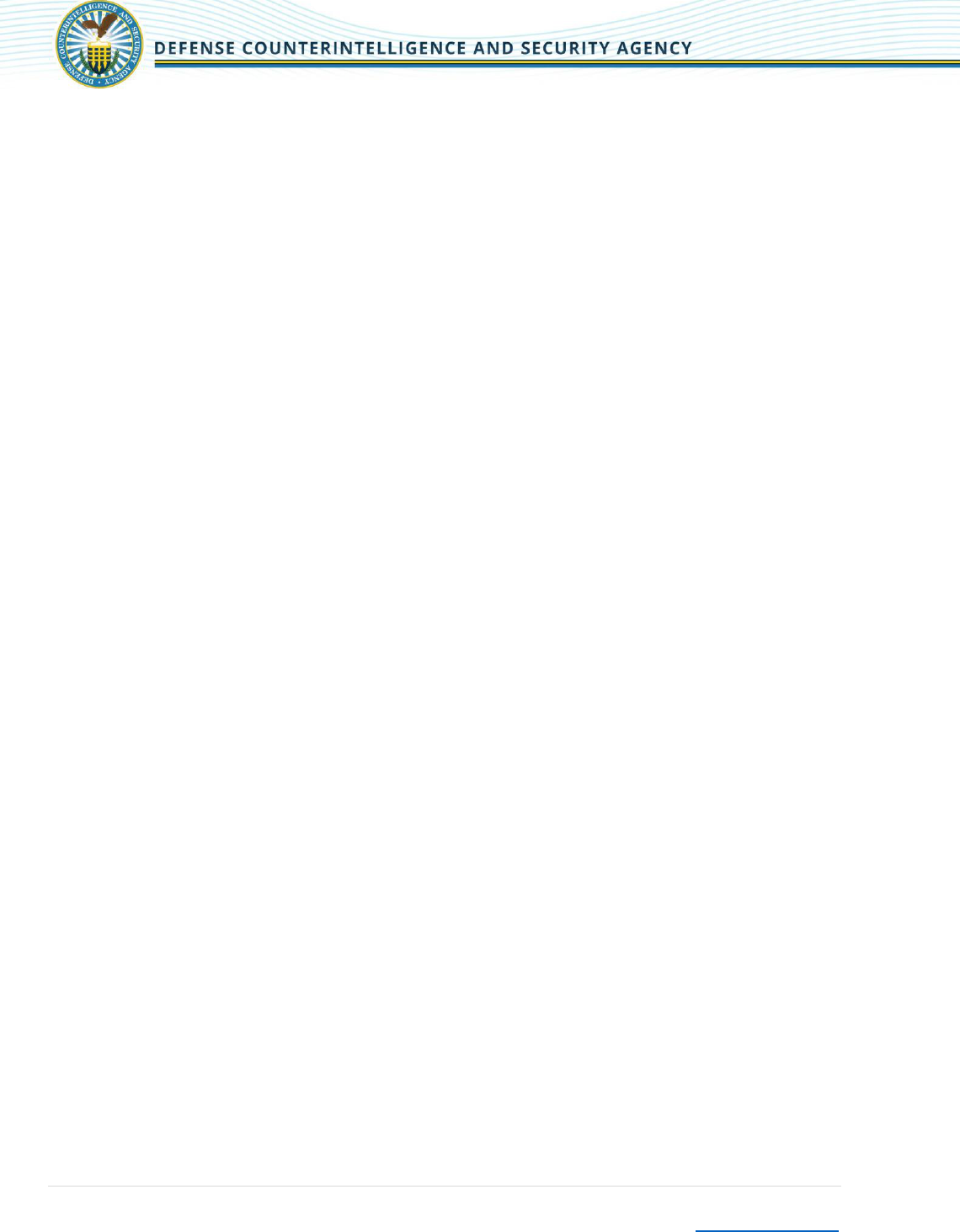
Defense Security Service
FCL Orientation Handbook
Page | 2
Return to Contents
Contents
Welcome Message ......................................................................................................................................................... 4
1.0 Overview of the National Industrial Security Program (NISP) ................................................................................ 5
2.0
Facility Security Officer (FSO) Responsibilities and Deadlines ................................................................................. 6
3.0 FCL Roadmap ....................................................................................................................................................... 8
4.0
FCL Process Information and Guidance ................................................................................................................... 9
4.1
FCL Orientation Video........................................................................................................................................... 9
4.2
FCL Initial Orientation Meeting.............................................................................................................................. 9
4.3
FCL Upgrade Information ...................................................................................................................................... 9
4.4
FCL Orientation Handbook Attachments ............................................................................................................. 10
4.5
FCL Package Submission ..................................................................................................................................... 11
5.0
Business Structure and Excluded Tier Entities ........................................................................................................ 12
5.1
Business Structure Required Documents ............................................................................................................. 12
5.2
Required Forms .................................................................................................................................................. 15
6.0
Specific Business Structure Guidance .................................................................................................................... 16
6.1
Corporation: ....................................................................................................................................................... 16
6.2
LLC: .................................................................................................................................................................... 17
6.3
Partnership: ....................................................................................................................................................... 18
6.4
Educational Institute: ......................................................................................................................................... 19
6.5
Sole Proprietorship: ............................................................................................................................................ 19
6.6
Branch or Division Office: ................................................................................................................................... 20
6.7
Joint Venture: ..................................................................................................................................................... 20
7.0
Excluded Tier Entity Process ................................................................................................................................. 22
7.1
Excluded Tier Entity Requirements ...................................................................................................................... 22
7.2
Entity Roles and Responsibilities ......................................................................................................................... 23
8.0
Highest Cleared Tier Entity .................................................................................................................................. 24
8.1
Process Flow ...................................................................................................................................................... 24
8.2
Entity Roles and Responsibilities ......................................................................................................................... 24
9.0 Accounts and Systems ............................................................................................................................................ 25
10.0
Training .......................................................................................................................................................... 27
10.1
FSO Training ............................................................................................................................................... 27
10.2
Insider Threat Program Training .................................................................................................................. 27
Appendix A: Defining KMP Authorities of Position ........................................................................................................ 28
Appendix B: Exclusion Resolutions ............................................................................................................................... 30
B.1
Highest Cleared Entity Noting Excluded Entity’s Exclusion and Resolution to Exclude Parent Organization .............. 30
B.2
Exclusion Resolution of Corporate Organization ................................................................................................... 31
B.3
Exclusion Resolution for LLC Member (Organization) ............................................................................................ 32
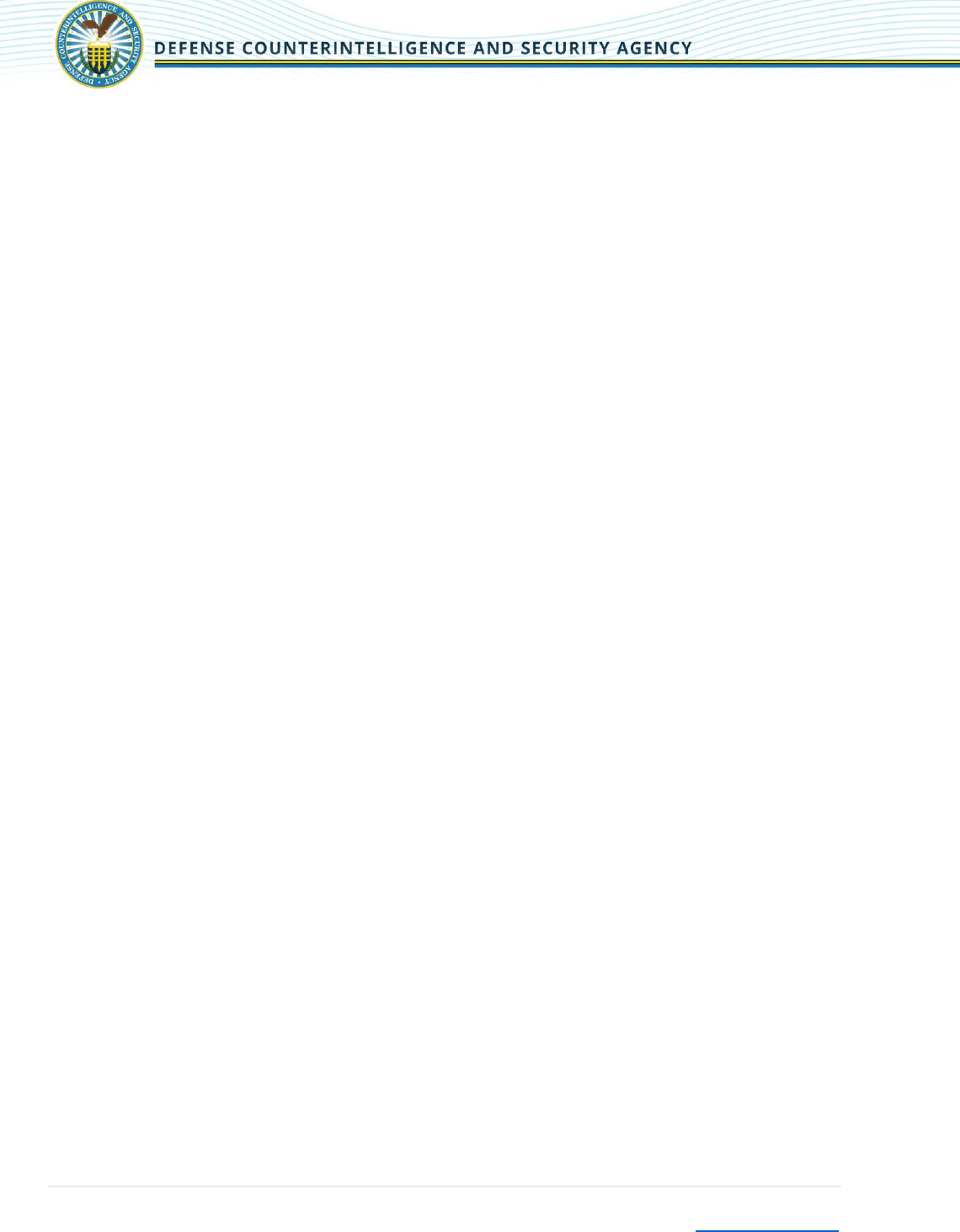
Defense Security Service
FCL Orientation Handbook
Page | 3
Return to Contents
B.4
Exclusion Resolution for Certain Directors, Officers, and LLC Member (if Person) ................................................... 33
Appendix C: Navigating the National Industrial Security Program (NISP) Risk Management Framework
(RMF) Process .............................................................................................................................................................. 34
NISP Authorization Office ......................................................................................................................................... 34
Risk Management Support Elements ........................................................................................................................ 34
Appendix D: Sample 328/441 Guides / Sample Orgainization Chart ............................................................................. 36
D.1 DD Form 441 Completion Sample ...................................................................................................................... 36
D.2 SF 328 Certification Guide ................................................................................................................................. 37
D.2.1 SF-328 Instructions .................................................................................................................................................. 38
D.3 Sample Organization Chart ................................................................................................................................ 38
Appendix E: FCL Package Submission Checklist ............................................................................................................ 39
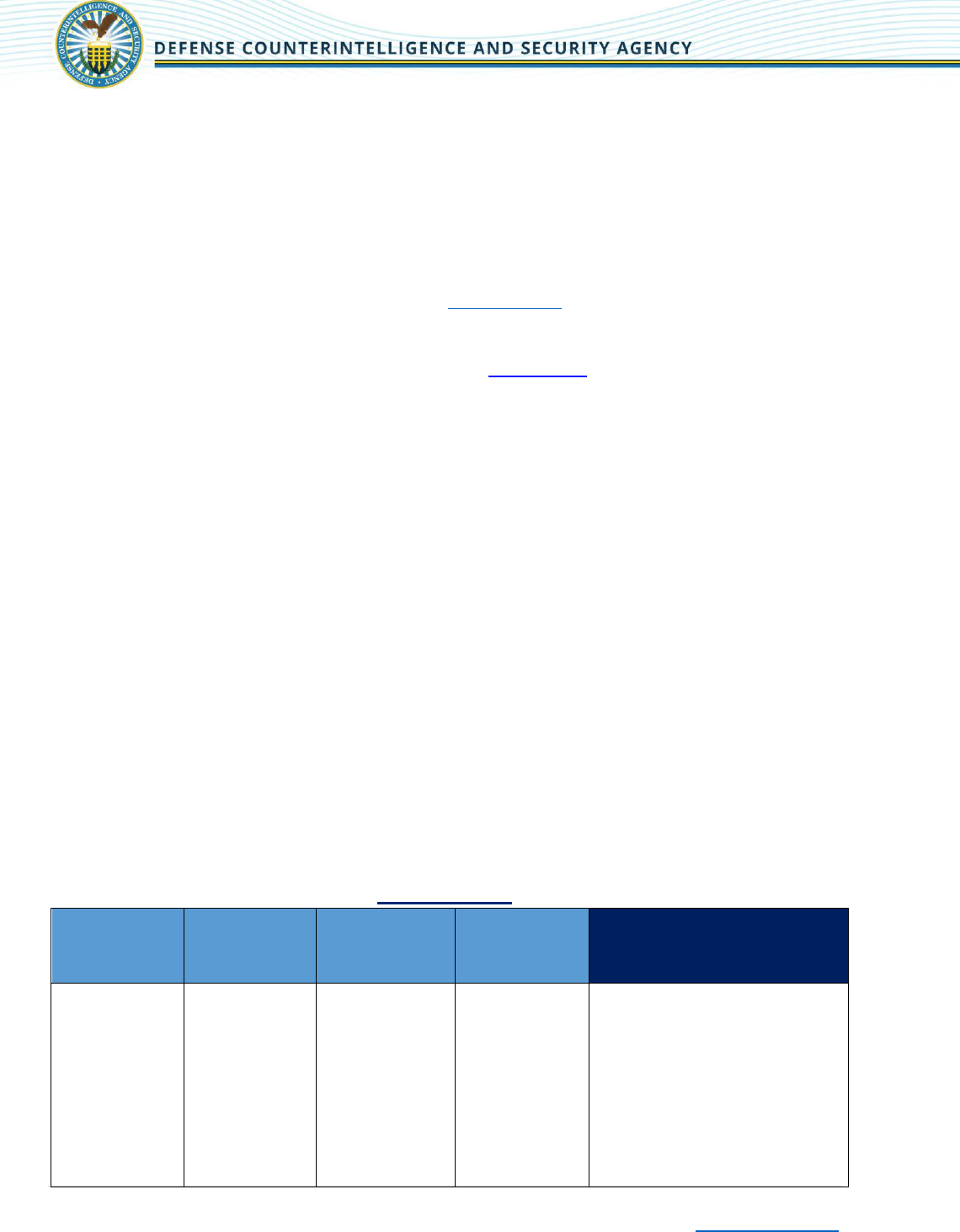
Defense Security Service
FCL Orientation Handbook
Page | 4
Return to Contents
Welcome Message
On behalf of the Defense Counterintelligence and Security Agency (DCSA), welcome to the first step in
the Facility Clearance (FCL) process. DCSA is delegated security administration responsibilities and is
the Cognizant Security Office (CSO) on behalf of the Department of Defense (DoD). As the CSO, DCSA
will advise and assist your facility during the FCL process and while you are under our cognizance in the
NISP. The requirements, restrictions, and other safeguards that cleared companies must put in place
are outlined in the National Industrial Security Program Operating Manual, referred to as the NISPOM.
The NISPOM can be located on the DCSA website, at www.DCSA.mil in the Critical Technology
Protection section. You are encouraged to review the chapters that are applicable to your security
program at this time in order to understand the requirements of the agreement you are about to
execute between your company and the US Government (DD Form 441). The NISPOM defines a Facility
Clearance as an administrative determination that, from a national security standpoint, a company is
eligible for access to classified information at the same or lower classification level as the clearance
being granted.
The DCSA Facility Clearance Branch (FCB) recently received a request from a Government Contracting
Activity (GCA) or cleared contractor to sponsor your facility for a FCL under the National Industrial
Security Program (NISP) for performance on a classified government contract. In order to obtain a
Facility Clearance, a company must meet the eligibility requirements listed in the NISPOM 2-102, and
meet personnel security clearance requirements for certain essential Key Management Personnel, or
KMPs, also discussed in NISPOM chapter 2, section 1. It is important to understand that in order to be
eligible for a Facility Clearance, an organization’s employees must need access to information that is
classified at the Facility Clearance level requested. A requirement to have background investigations to
meet position or contract requirements or for access to a physical spaces is not the same as a
requirement to access classified information and does not meet the eligibility requirement for a Facility
Clearance. Please ensure you understand this requirement and how your company meets it, as
verification of this will be a point of emphasis throughout the Facility Clearance process.
The below chart represents the first 45 days of the FCL process as well as the follow up after your FCL is
issued. Day 1 of this process starts when you receive the Welcome Email identifying specific deadlines
for your company and guiding you to register for an account with the National Industrial Security System
(NISS).
FCL Roadmap
FCL Orientation
Handbook
Day 1- Day 5
View FCL
Orientation
Video
Day 5 – Day 10
Complete and
submit FCL
Package
Day 10 – Day 20
FCL Initial Review
and e-QIP
submission
Day 20 - 45
Post FCL Outreach
First Year Under NISP
DCSA provides
FSOs an
educational, user
friendly, and
informative guide
to navigate the FCL
process.
FSOs will view the
FCL Orientation
video on the FCL
process
(www.dcsa.mil),
NISS system,
d
eadlines, and
identify documents
and forms required
per company’s
business structure
FSOs upload all
documents and
forms per its
company’s
Business structure
into NISS. FCL
package is
submitted by day
20.
ISRs review
company’s FCL
package and prepare
for Initial FCL
Orientation meeting.
FSOs submit KMP
e-QIPs and
fingerprints, and
prepare for
orientation
meeting
DCSA reaches out to facilities residing in
the
NISP under a year, to determine
compliance with NISPOM implementation
of a facility security program, and assess
the facility’s
potential risk to National
Security.
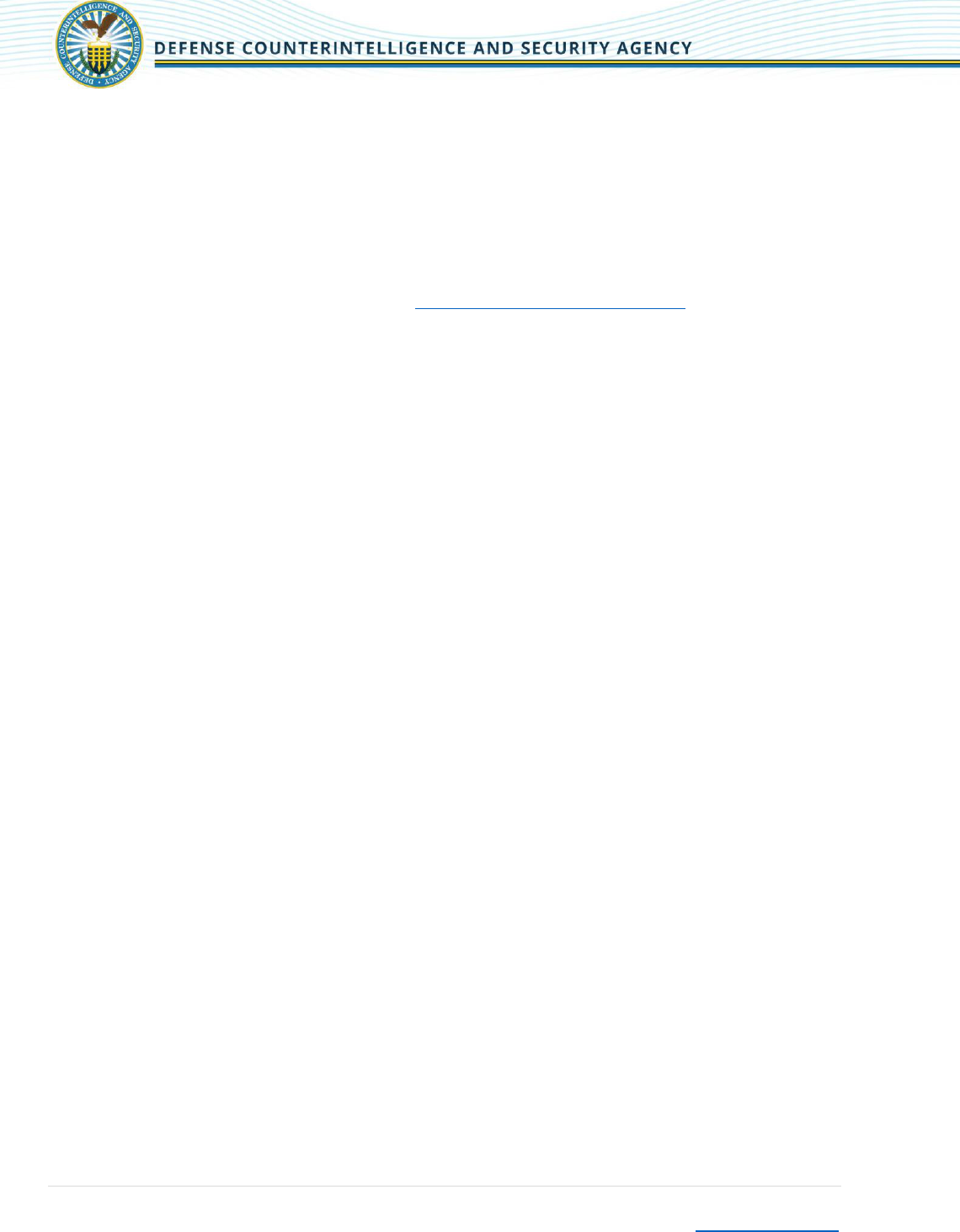
Defense Security Service
FCL Orientation Handbook
Page | 5
Return to Contents
1.0 Overview of the National Industrial Security Program (NISP)
The NISP was established by Executive Order 12829, as amended, in January of 1993 for the protection
of classified information. The NISP applies to all executive branch departments and agencies, and to all
cleared contractor facilities located within the United States, its territories and possessions.
Participation is voluntary, but access to classified information will not be permitted otherwise. When
your facility receives its FCL, it will be subject to provisions of the NISPOM. You will find a link for
downloading the NISPOM at the DCSA web site (https://www.dcsa.mil/mc/ctp/nisp/) under the Critical
Technology Protection Mission Center. You are expected to review and become familiar with the
NISPOM. The FCL Orientation Handbook is not intended to replace the NISPOM. It is simply a guide to
inform and assist with navigating the FCL process.
The classification levels in the NISP are CONFIDENTIAL, SECRET, and TOP SECRET. The FCL level your
facility receives is based upon the classified contract you have been awarded and its requirements.
DCSA may be able to issue an interim FCL prior to issuance of the final FCL. In order to be issued an
interim FCL, DCSA must first validate that there is no unmitigated foreign ownership, control, or
influence (FOCI), KMPs have personnel clearances at the interim level or higher, and the initial
orientation meeting has been completed.
A final FCL cannot be issued until ALL essential KMP are cleared at the final level of the requested FCL,
there are no open changed conditions that would impact the FCL, and the initial orientation meeting has
been completed.
If your company has other companies in its legal structure, such as parent or member companies, a
decision will be made to either clear or exclude them. The assigned DCSA Industrial Security
Representative (ISR) will decide course of action during their review of the documentation in NISS.
Please note: If the essential KMP(s) do not already possess a valid personnel security clearance at the
level required for the FCL, your company may experience significant time impacts for issuance of the
FCL due to personnel security background investigations and adjudication.
A facility where Foreign Ownership, Control, or Influence (FOCI) is present will also extend time-lines for
processing the FCL because these facilities must undergo FOCI analysis and satisfactory FOCI mitigation.

Defense Security Service
FCL Orientation Handbook
Page | 6
Return to Contents
2.0
Facility Security Officer (FSO) Responsibilities and Deadlines
Over the course of the next 45 days it is your responsibility to identify your company’s business
structure and provide required documentation and forms at the appropriate time. To make this
process transparent, the FCL Orientation Handbook provides a roadmap to guide you along the FCL
process. In addition to the FCL Orientation Handbook, a FCL Orientation video is available to review
as many times as necessary that provides a detailed explanation of the FCL process to include
important dates and deadlines. You must first obtain a NISS account prior to submitting any
required documentation. Information on NISS can be found at: https://www.DCSA.mil/is/ncaiss/
You can find information to setup your NISS account by accessing the attachment to this handbook titled
“Creating an NCAISS Account & Registering for the NISS.”
There are three deadlines during the FCL process:
1. Required legal documentation and DCSA forms must be submitted (FCL Package) in NISS
within 20 days of receiving the Welcome E-mail (Day 1)
2. KMP Electronic Questionnaire for Investigations Processing (e-QIPs) must be submitted
within 45 days of receiving the Welcome E-mail (Day 1)
3. KMP fingerprints should be submitted at the same time as the e-QIP submission or within
14 days after submitting KMP e-QIPs
Essential KMP(s) who do not have personnel security clearance eligibility, have not held a personnel
security clearance in more than 24 months, or whose background investigations are out of scope will
need to complete a Standard Form 86 (SF 86) and submit electronic fingerprints. You will not have
access to e‐QIP until you receive instructions to do so. An e-QIP will be initiated by FCB, and you will
be provided access/submission instructions after your FCL package has been reviewed and
approved. It is strongly encouraged that you and all key management personnel obtain a copy of
the SF 86 and begin to gather the data that will need to be entered in e‐QIP. Please note that the
PDF or paper version of the SF 86 cannot be submitted. You must enter this information in e‐QIP.
However, the questions are the same and the PDF version can be used to assist you in gathering the
necessary data.
Electronic fingerprints must be submitted to the Office of Personnel Management, or OPM, via the
Secure Web Fingerprint Transmission (SWFT). There are numerous methods for submitting electronic
fingerprints. Most companies that are new to the NISP either receive assistance with this from their
prime contractor or another cleared company or they use the services of a third party service provider.
A list of third party service providers can be found on DMDC’s website. Please note that the locations
listed are headquarters offices and do not indicate this is the only area the provider serves. Many
providers have nationwide locations or provide fingerprint card conversion services, in which a hard
copy fingerprint card can be mailed to them for conversion to the proper electronic format and
uploaded to SWFT. Whatever method you use, you should verify that the fingerprints are being
submitted to OPM via SWFT as many organizations submit fingerprints to other agencies through
other systems.
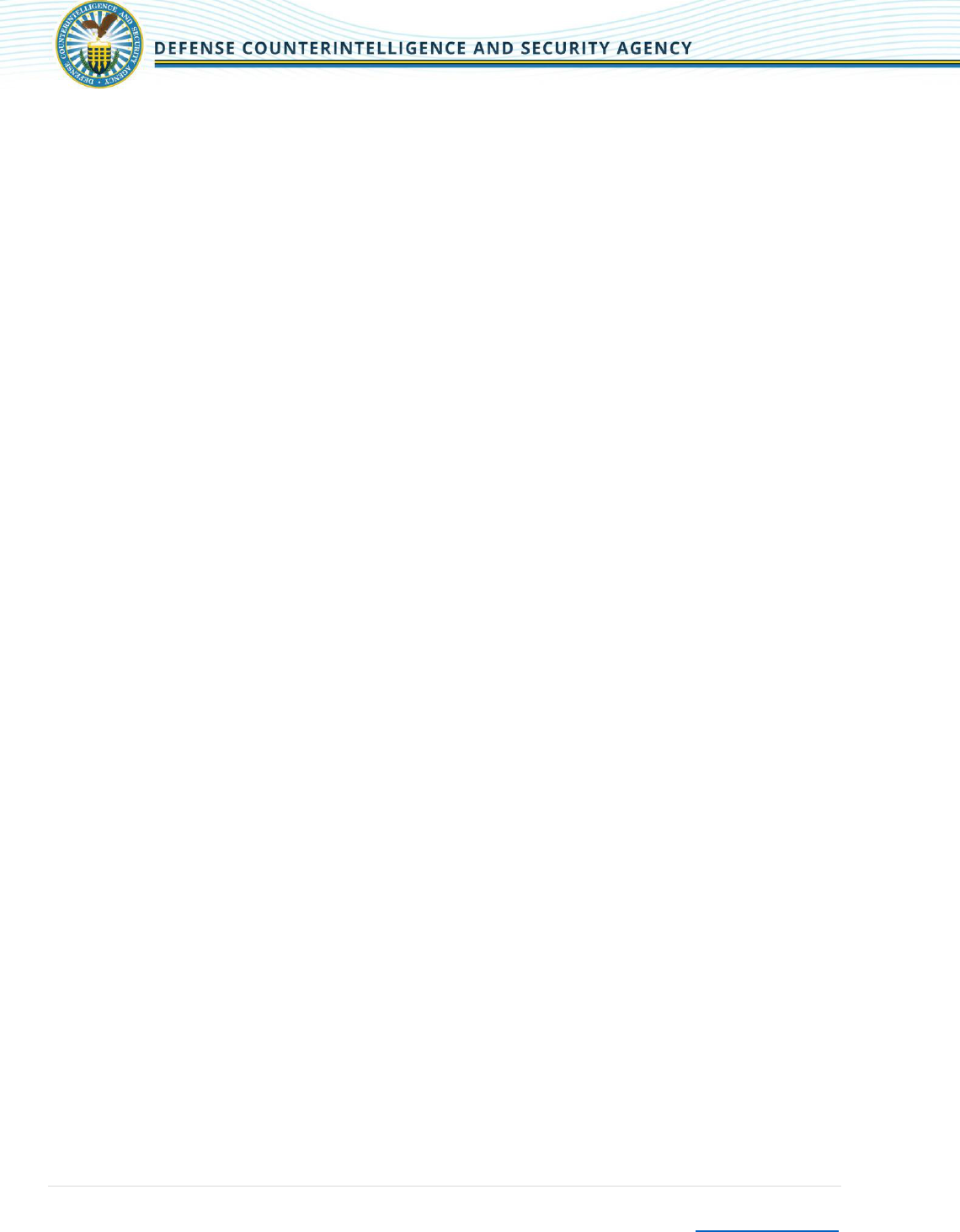
Defense Security Service
FCL Orientation Handbook
Page | 7
Return to Contents
First Year Post FCL Responsibilities:
Once the Facility Clearance Branch (FCB) issues an FCL, you are required to comply with the DoD
5220.22-M “National Industrial Security Program Operation Manual (NISPOM)” and implement a
security program. Your company’s assigned ISR will reach out 120 days after the FCL is issued to conduct
a brief assessment of your facility’s compliance with NISPOM requirements and implementation of its
facility security program and additionally, per NISPOM Change 2, effective May 2016, an insider threat
program.

Defense Security Service
FCL Orientation Handbook
Page | 9
Return to Contents
4.0
FCL Process Information and Guidance
4.1
FCL Orientation Video
The FCL Orientation Video is a detailed, narrated guide that will walk you through the FCL
process. The video is separated into several sections by topic that can be viewed together
or separately as often as needed. You are strongly encouraged to take the necessary time
to view these videos focusing on specific deadlines that you must meet and required
documentation that you must provide in order to move the FCL process forward. Along
with the FCL Orientation Handbook, these videos provide all of the information you will
need to ensure you have met all requirements for the facility clearance.
If after you have thoroughly reviewed the information contained in the video, handbook
and attached documents, there are specific, targeted questions, please feel free to contact
the DCSA Knowledge Center at 1-888-282-7682, Option #3. Any NISS technical questions
should be directed to the NISS Technical Line at Option #2. The Knowledge Center staff will
be ready and available to answer those specific, targeted questions; after they have
verified that you have viewed the entire video and all sections applicable to your facility.
4.2
FCL Initial Orientation Meeting
The FCL initial orientation meeting is conducted by an ISR assigned from the local field
office. Please be prepared to discuss the following topics with the ISR during their on-site visit
to the facility:
Company’s NISPOM requirements
Facility’s Security Program
Facility’s Insider Threat Program
Provide KMP U.S. citizenship verification (current or expired passport or a birth certificate, and
government issued photo ID)
4.3
FCL Upgrade Information
If your facility has been sponsored to upgrade the FCL level, the FCL process is largely the
same. There are some key differences in the process. The facility should already have an
established NISS account, as well as a primary and alternate DISS account holders. The
facility still need to submit an FCL package, annotating any changes to the company.
While the FCL package is completed, the KMP list will need to be updated or verified in
accordance with any changes the company has made. The KMPs will need to submit new
e-QIPs to upgrade their personnel security clearances, if they are not already cleared at
the required level for the FCL upgrade. One key difference in the FCL process for an
upgrade is the FSO is responsible for initiating e-QIPs for the KMPs, and the alternate
DISS account holder will initiate the e-QIP for the FSO. The e-QIPs should be initiated once
the FSO has submitted the FCL package in NISS. KMPs will be required to submit new
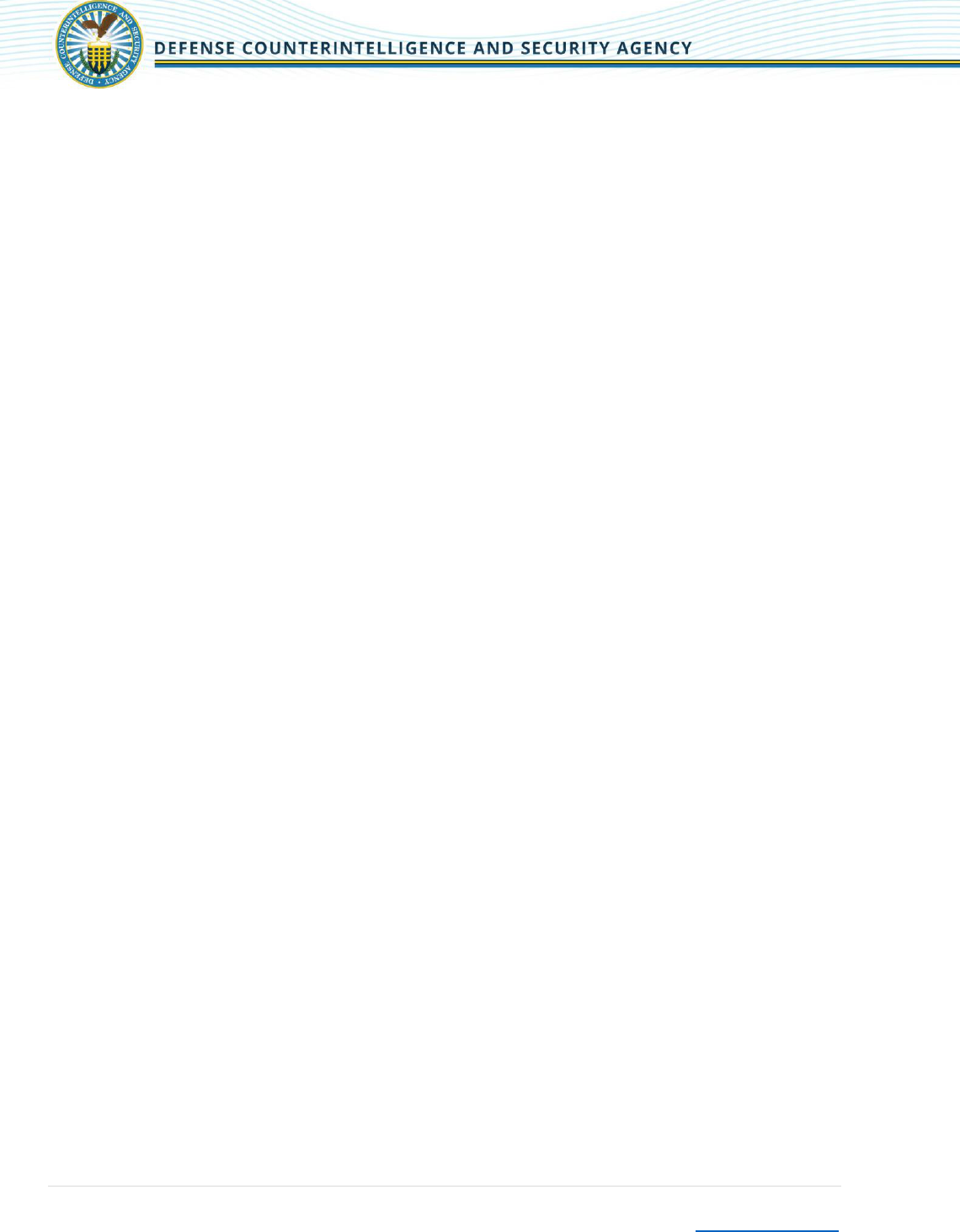
Defense Security Service
FCL Orientation Handbook
Page | 10
Return to Contents
fingerprints, if their personnel security clearance needs to be upgraded due to the change
in scope of the investigation.
It is recommended when submitting the NISS FCL package, the FSO update the SF-328 and
ensure it is accurate. The facilities FCL package will be reviewed by DCSA HQ once again
for analysis of any potential FOCI. If the upgraded FCL is requested within 12 months of
the facilities initial FOCI analysis, a new FOCI analysis may not be required. This will be
determined by the industrial security representative upon review of the FCL package and
in coordination with DCSA HQ.
While all Initial FCL packages are reviewed by the Facility Clearance Branch, all FCL
upgrades will remain assigned to their local field office, and the FCL packages will be
reviewed by the facilities currently assigned industrial security representative. The facility
will not be reassigned to the Facility Clearance Branch. The Facility Clearance Branch will
continue to oversee and coordinate the FCL process and assist the facility and the
industrial security representative.
4.4
FCL Orientation Handbook Attachments
Attached to this handbook (PDF), you will find a number of supplements that are designed
to assist you throughout the FCL process. Below is a list of included attachments. Please
review these attachments, as they will answer many common questions throughout the
FCL process. They will assist in reducing the chances of your FCL package being returned
for revision, which may extend the FCL process timelines.
1. Creating an NCAISS Account & Registering for the NISS - Guide
2. DD 441 - Completion Guide
3. External How To Resubmit Initial FCL Package NISS Guide – Guide on how to RESUBMIT
the FCL package once it has been reviewed and returned for corrections.
4. Guidelines For An Accurate KMP List – Assist in determining KMP to clear or exclude.
5. Initial FCL Process Industry NISS Guide – Will assist in compiling and submitting your
initial FCL package.
6. Sample Org Chart – An example of a legal org chart and what should be
included/addressed
7. SF328 - Certification Guide – Guide on what signatures are required.
8. SF328 Instructions – Details regarding each question of the SF-328 and what detailed
responses are required.
To open the Attachments panel, choose
View > Show/Hide > Navigation Panes >Attachments.
In the Attachments panel, select the attachment.
Double Click the attachment icon to open the attachment in its native application. You
may also right click, and save the attachment outside of the FCL orientation handbook.
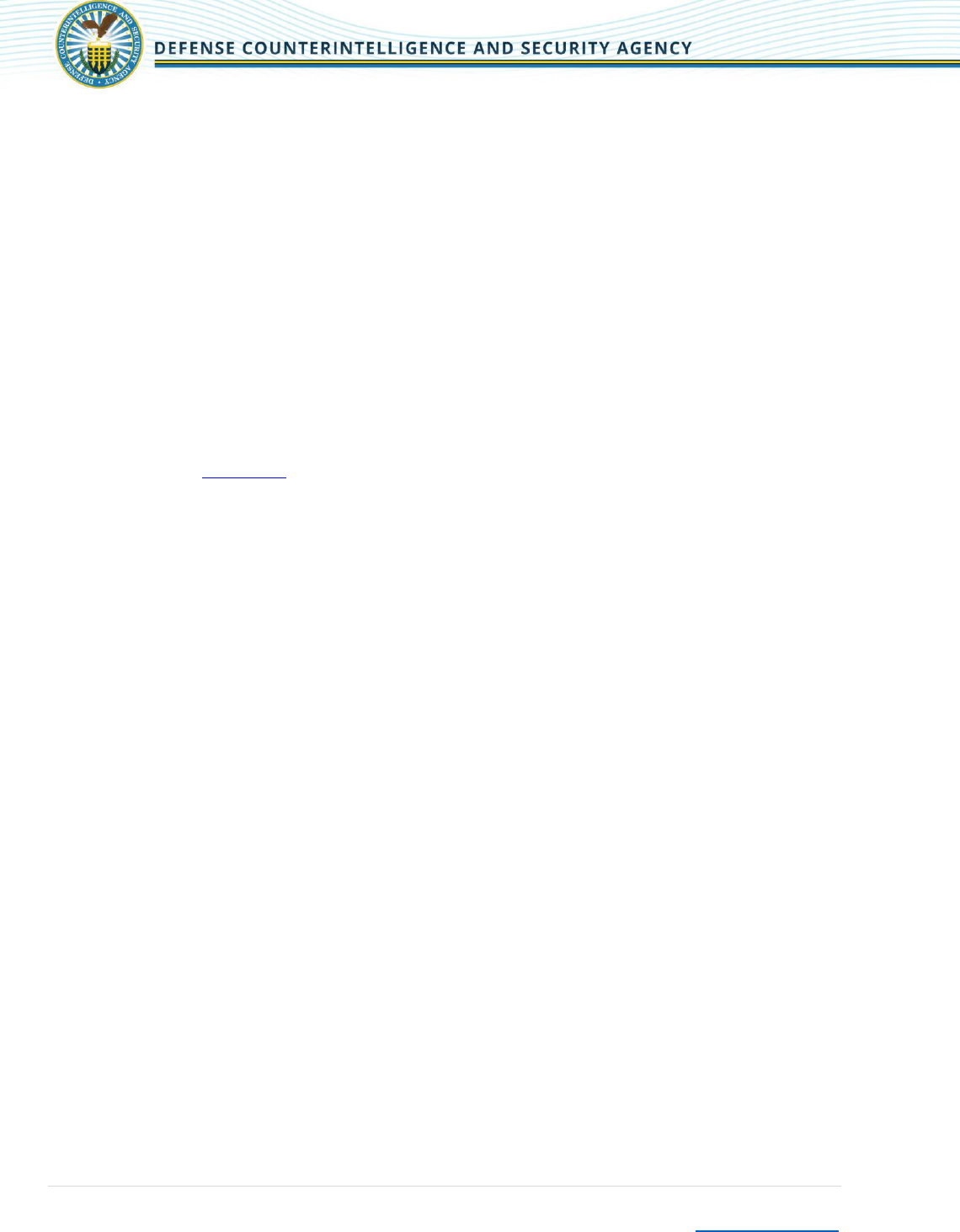
Defense Security Service
FCL Orientation Handbook
Page | 11
Return to Contents
4.5
FCL Package Submission
Once you have collected and reviewed all your required business documents, it is time to
populate the FCL package in NISS. To populate the package and upload documents, you
will need to have a NISS account and be using one of the following roles
FSO Role
Alternate FSO Role
Other Security Staff Role
Once the package has been populated with all required information and documents,
submit the FCL package for DCSA review. Guidance for submission of the FCL package in
NISS can be found in the attachment to this handbook titled “Initial FCL Process Industry.”
Prior to submitting the FCL package, be sure to review the FCL Package Submission
Checklist found in Appendix E. This will assist you in avoiding many common mistakes,
which result in the FCL package being returned for revision and may delay the FCL process.
After you have submitted the FCL package, ensure the FCL Package status has been
updated to “Submitted.” This will ensure that any potential NISS workflow issues are
quickly identified and remedied.
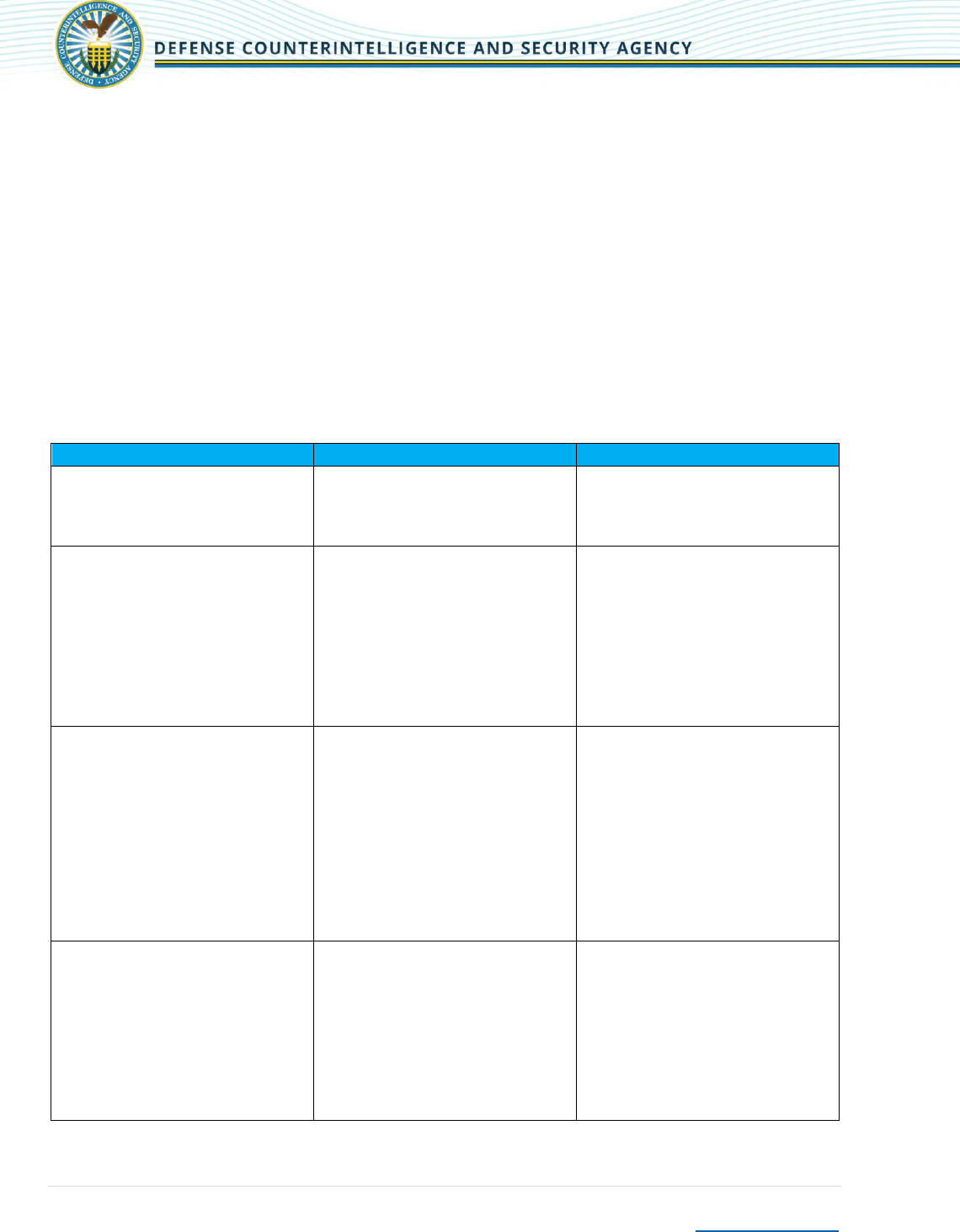
Defense Security Service
FCL Orientation Handbook
Page | 12
Return to Contents
5.0
Business Structure and Excluded Tier Entities
The following section details the required business structure and excluded tier entity forms and
documents to submit in your company’s FCL Package in NISS.
Please note: In accordance with ISL 2006-02, #12 when only one person within an organization requires
access to classified information and that person and members of their immediate family are the sole
owners of the organization, that person should work as a consultant and would not require a Facility
Clearance.
5.1
Business Structure Required Documents
Business Structure
Business Records Required
PCLs for KMPs
Sole Proprietorship
Business License
Fictitious Name Certificate
Recent changes to company
Structure
Owner of sole proprietorship
Senior Management Official
(SMO)
FSO
ITPSO
General Partnership
Business License
Fictitious Name Certificate
Partnership Agreement
Legal Organization Chart
Board/Company Meeting Minutes
Recent changes to company
Structure
FSO/ITPSO Appointment Letter
KMP Citizenship Verification
Signed undated DD Form 441
Signed SF 328
SMO
FSO
ITPSO
All General Partners, except:
Single Partner (must be cleared)
Management Committee (all
committee members must be
cleared)
Limited Partnership
Business License
Fictitious Name Certificate
Partnership Agreement
Certificate of Limited Partnership
Legal Organization Chart
Board/Company Meeting
Minutes
Recent changes to company
structure
FSO/ITPSO Appointment Letter
KMP Citizenship Verification
Signed undated DD Form 441
Signed SF 328
SMO
FSO
ITPSO
All General Partners, except:
Single Partner (must be cleared)
Management Committee (all
committee members must be
cleared)
Limited Partners need PCL if they
work on classified contracts or
need access to classified
information
Joint Venture (JV)
Business License
Fictitious Name Certificate
JV Agreement
Legal Organization Chart
Board/Company Meeting Minutes
Recent changes to company
Structure
FSO/ITPSO Appointment Letter
KMP Citizenship Verification
Signed undated DD Form 441
Signed SF 328
SMO
FSO
ITPSO
JV Partners must be excluded or
cleared if their duties require
access to classified information
Officials working on JV are
cleared if their duties require
access to classified information
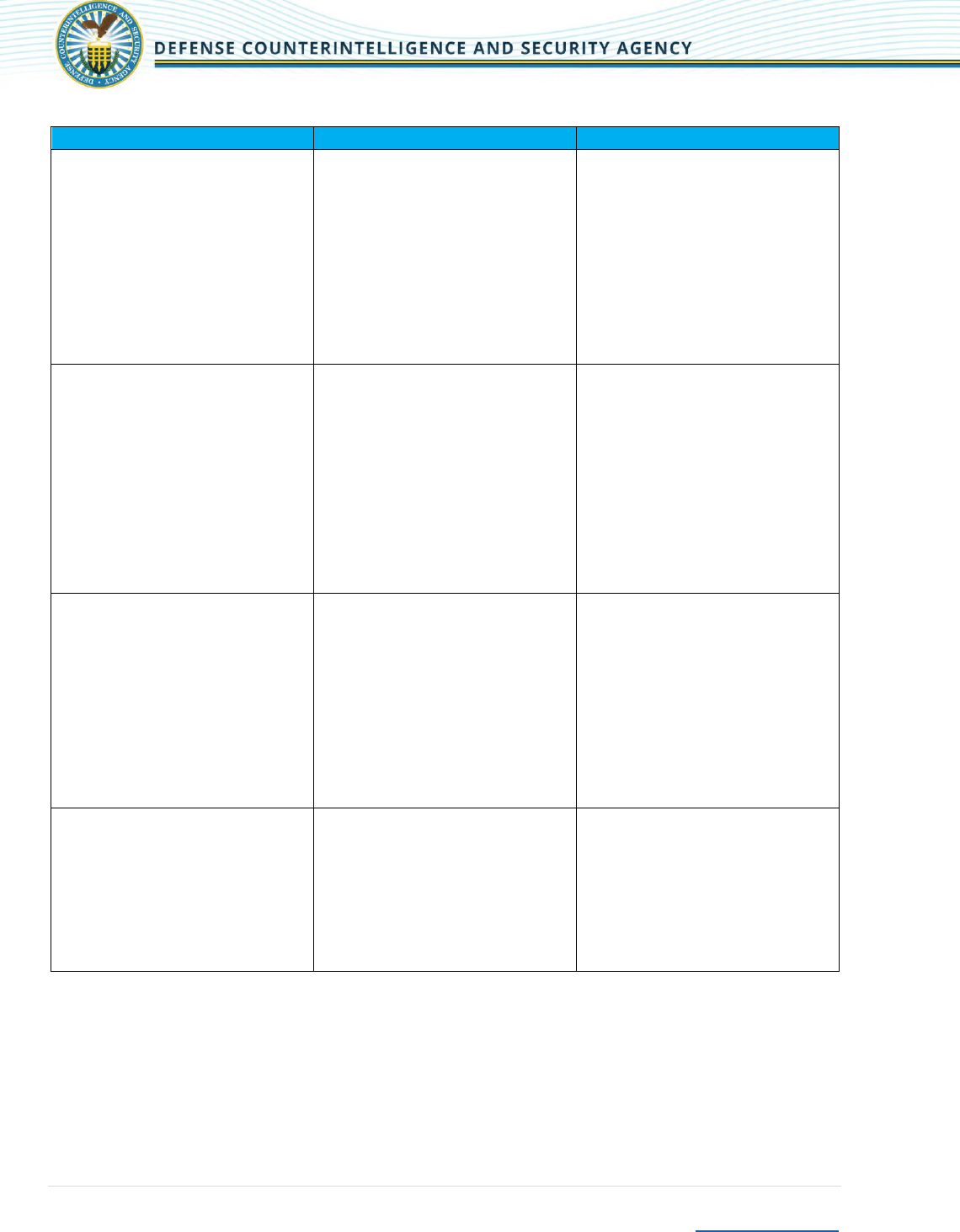
Defense Security Service
FCL Orientation Handbook
Page | 13
Return to Contents
Business Structure
Business Records Required
PCLs for KMPs
Privately Held Corporation
Business License
Fictitious Name Certificate
Articles of Incorporation
By-Laws
Stock Ledger
Legal Organization Chart
Board/Company Meeting Minutes
Recent changes to company
structure
FSO/ITPSO Appointment Letter
KMP Citizenship Verification
Signed undated DD Form 441
Signed SF 328
SMO
FSO
ITPSO
Chairman of the Board
Vice Chair of Board, if provisions
for rotating or Pro Tem duties
Corporate Officials are cleared if
their duties require access to
classified information
Publicly Held Corporation
Business License
Fictitious Name Certificate
Articles of Incorporation
By-Laws
Stock Ledger
Most recent SEC filings
Legal Organization Chart
Board/Company Meeting Minutes
Recent changes to company
Structure
FSO/ITPSO Appointment Letter
KMP Citizenship Verification
Signed undated DD Form 441
Signed SF 328
SMO
FSO
ITPSO
Chairman of the Board
Vice Chair of Board, if provisions
for rotating or Pro Tem duties
Corporate Officials are cleared if
their duties require access to
classified information classified
information
Limited Liability Company
Business License
Fictitious Name Certificate
Certificate of Formation or
Articles of Organization
Legal Organization Chart
Operating Agreement
LLC Meeting Minutes
Recent changes to company
structure
FSO/ITPSO Appointment Letter
KMP Citizenship Verification
Signed undated DD Form 441
Signed SF 328
SMO
FSO
ITPSO
LLC Members are cleared if their
duties require access to classified
information
Managers
College/University
Charter
Board/University Meeting
Minutes
Legal Organization Chart
Recent changes to university
Structure
FSO/ITPSO Appointment Letter
KMP Citizenship Verification
Signed undated DD Form 441
Signed SF 328
SMO
FSO
ITPSO
President
Regents/Trustees/Directors are
cleared if their duties require
access to classified information
*Include the most recent Meeting Minutes and any Meeting Minutes to reflect changes to a company’s
address, name, KMPs, etc. which may be different than the operating agreement/by-laws etc.
** If Business Structure is not identified, discuss with your ISR or contact the DCSA Knowledge Center at 1-888-
282-7682, Option #3
Legal Organization Chart (see Appendix D) must be submitted in the FCL Package. It shall reflect all U.S.
and foreign parent companies and subsidiaries including their affiliates. The Legal Organization Chart
shall identify the associations between the cleared facilities and the ultimate parents, including the
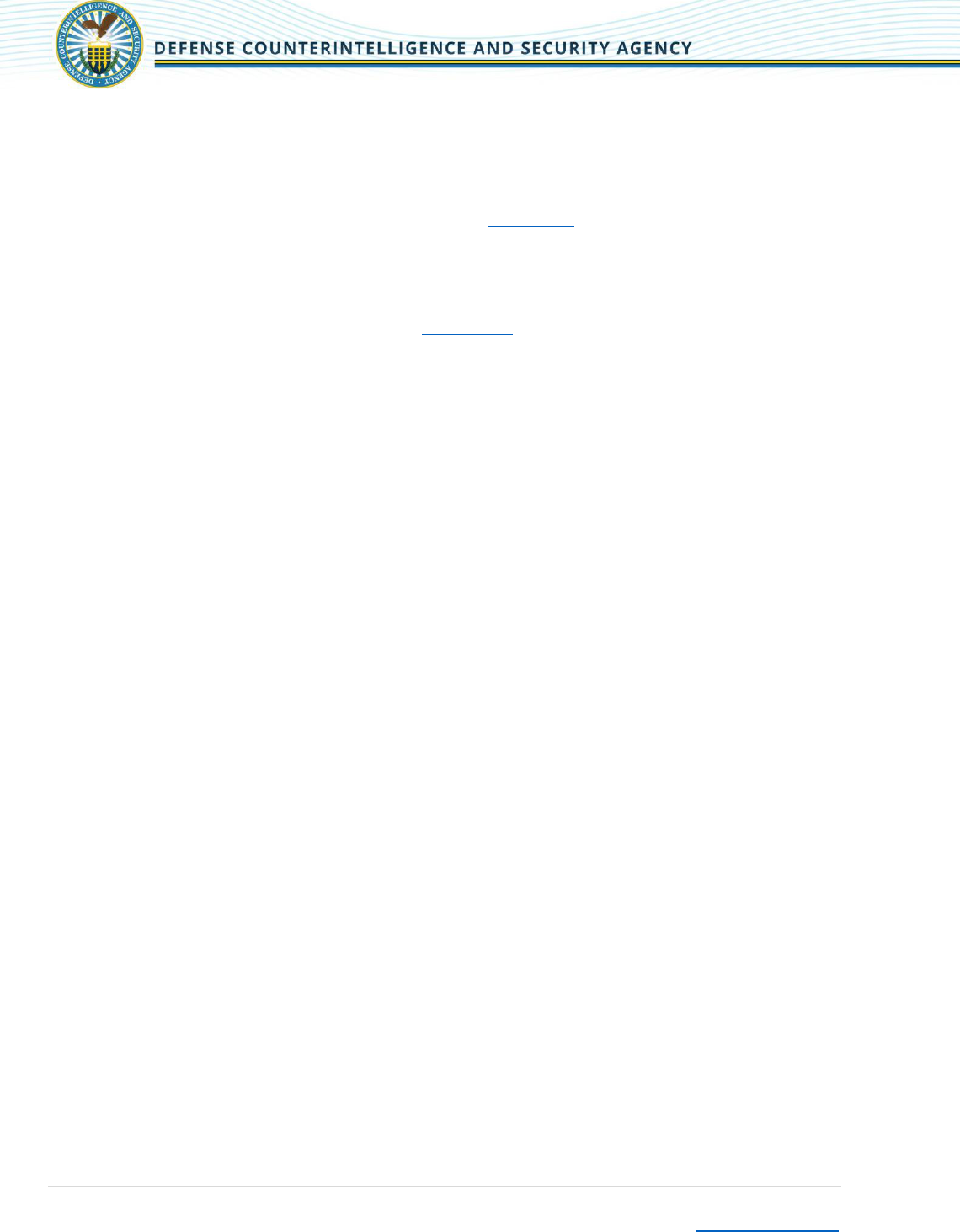
Defense Security Service
FCL Orientation Handbook
Page | 14
Return to Contents
percentages of ownership, FCL status, CAGE codes and other helpful information explaining the
relationship among the companies in the chain of ownership.
Excluded KMPs: DCSA will determine which Officers and Directors of the company not accessing
classified information are considered excluded, and do not need a PCL. The company must submit
exclusion resolutions for these Officers and Directors (see Appendix B).
If Key Management Personnel are cleared for contractual performance reasons and not in connection with
the FCL then this difference needs to be identified.
**FOR MORE INFORMATION ON KMP ROLES SEE APPENDIX A
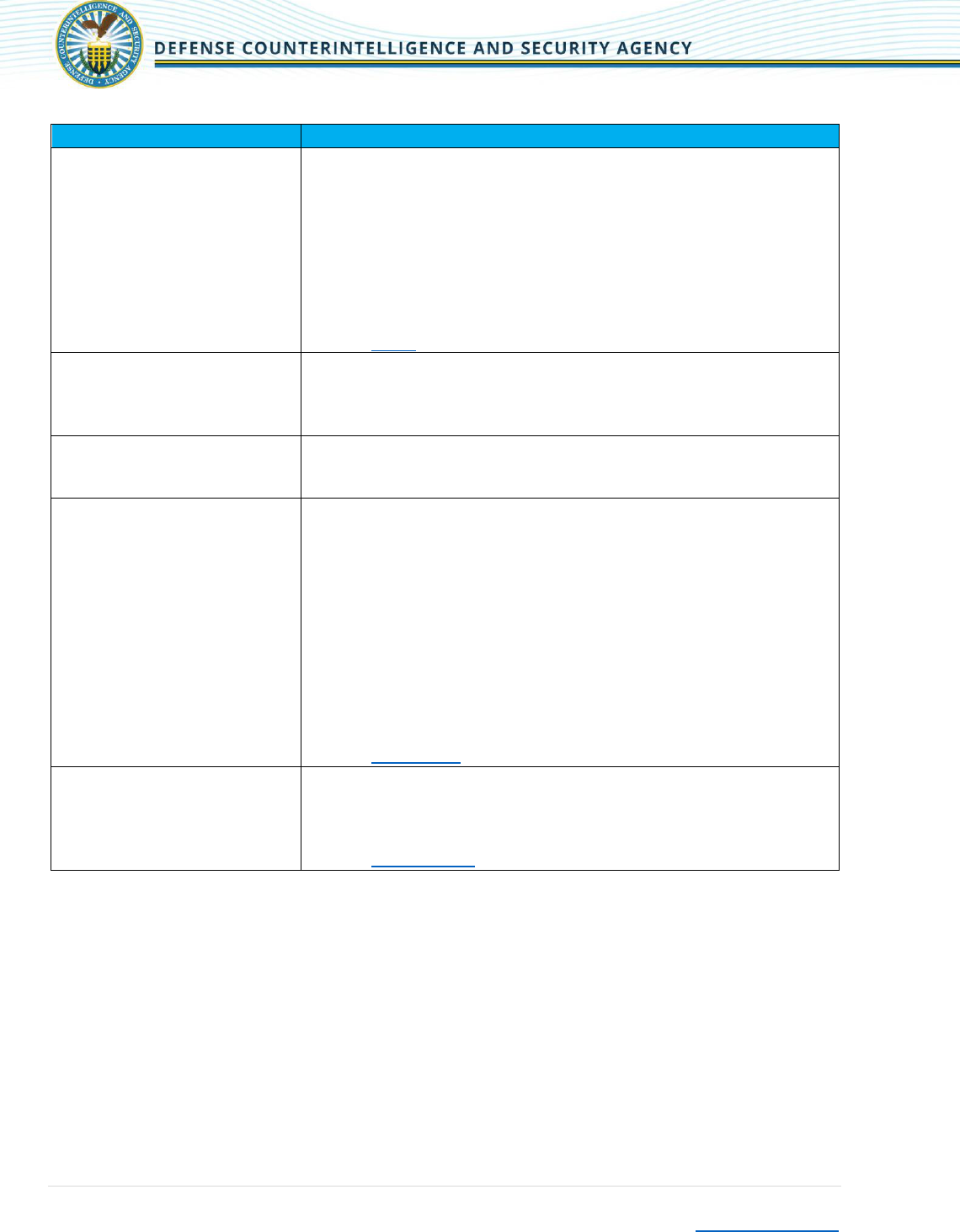
Defense Security Service
FCL Orientation Handbook
Page | 15
Return to Contents
5.2
Required Forms
Forms
To Include on Forms
SF 328; Certificate Pertaining to
Foreign Interests
Certificate pertaining to a company’s foreign interests
Execute two original SF 328 forms for DCSA and contractor
retention
SF 328 must be signed by an employee or representative of the
company who has actual authority to execute agreements with the
U.S. Government on behalf of the company, such as the SMO
One witness signature is required
Upload signed SF 328 into NISS
Provide all supplemental responses to affirmative SF 328 questions
SF 328
Key Management Personnel
(KMP) Form - NISS
Spell out entire KMP names
Social Security Number not required for excluded KMPs
KMPs must match the Articles of Organization, by-laws or
amendments
Proof of Citizenship
If applicable
Citizenship verification in the form of a U.S. Passport, Birth
Certificate, or Certificate of Naturalization for all KMP(s) requiring
personnel security clearance processing.
DD Form 441
Agreement between your organization and the United States
Government that details the security responsibilities of both the
cleared organization and the United States Government
Execute two original DD 441 forms for DCSA and
contractor retention.
DD 441 must be signed by an employee or representative of the
company who has actual authority to execute agreements with the
U.S. Government on behalf of the company, such as the SMO.
One witness signature is required
Upload signed DD 441 into NISS
The date on page 1 and the Government Representative
section on page 2 should be left blank.
DD Form 441
DD Form 441-1
If applicable (Cleared
branches/divisions)
Attachment to the DD Form 441 listing cleared divisions or branch
offices that are included in and covered by the provisions of the
organization's Security Agreement and Certificate Pertaining to
Foreign Interest.
DD Form 441-1
As a general note for all business types, organizations must register their business with a
physical address. The physical address is the actual address where the organization is located
and does not have to be in the state of incorporation/organization. This is the address DCSA
uses for the Facility Clearance and is considered the home office. The CAGE code registration
must also match this address. Organization may also have a registered agent address, which
typically must be in the state of incorporation/organization and is usually the address
documents and notices, such as annual report filings, are mailed to by the Secretary of State.
Some states and jurisdiction do not require certain types of organizations to have all documents
referenced. In these cases, it may be very difficult for DCSA to determine if and when the
organization meets NISPOM requirements. Some documentation outlining the governance and
structure of the organization and the roles and responsibilities of the organization’s officials will
be required to determine eligibility for a Facility Clearance.
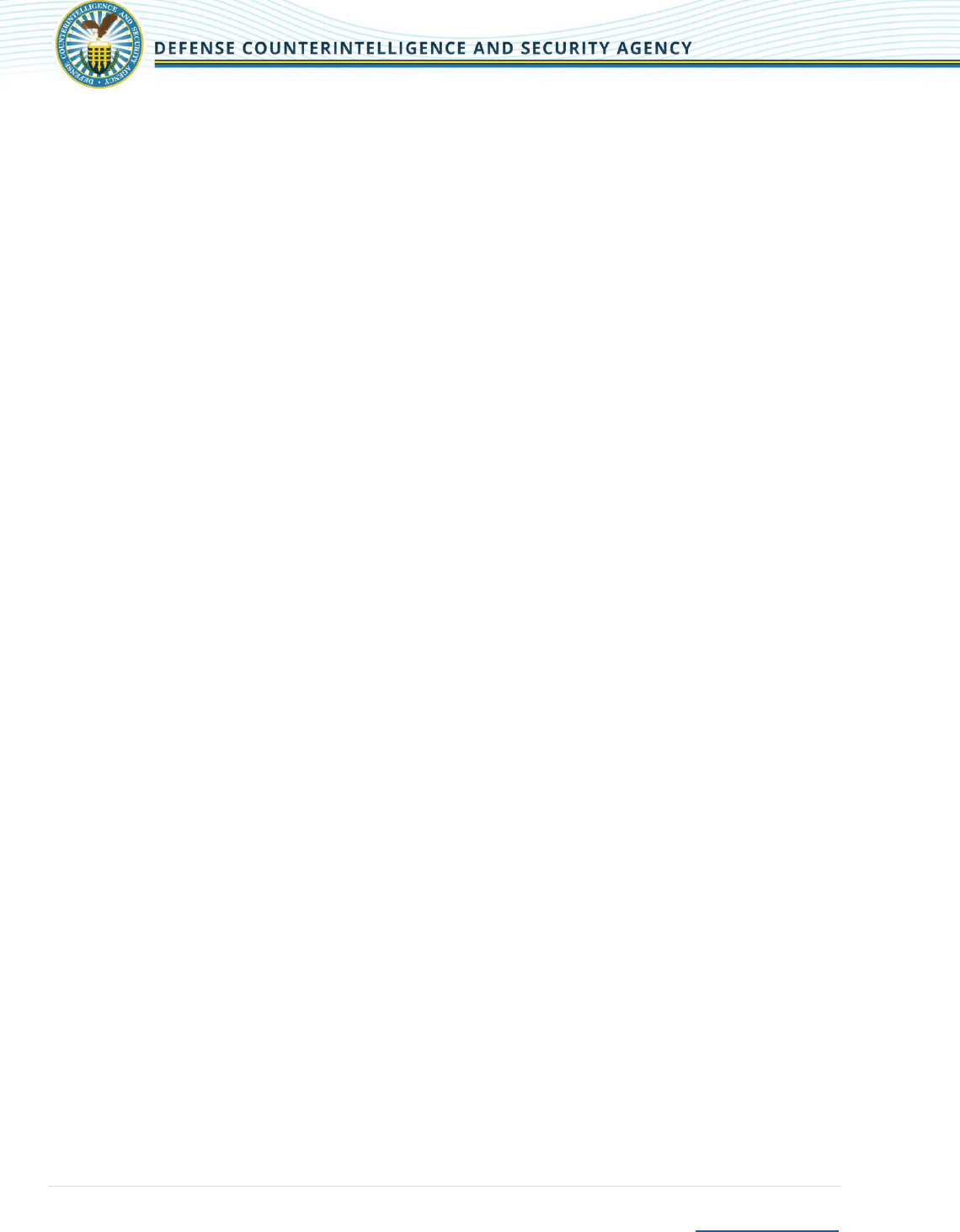
Defense Security Service
FCL Orientation Handbook
Page | 16
Return to Contents
6.0
Specific Business Structure Guidance
6.1
Corporation:
The business documents required for a privately or publicly held corporation include the Certificate or
Articles of Incorporation, which are filed with the Secretary of State’s office in the state or jurisdiction
where the corporation is incorporated, Corporate Bylaws describing the rules governing the regulation
of a corporation’s internal affairs, initial and most recent Shareholder and Board of Directors Meeting
Minutes, as well as those approving any significant changes to the Corporation, a stock ledger listing the
individuals and organizations that hold stock in or shares of the corporation or SEC filings for publicly-
held corporations, and a legal organization chart showing the corporation’s ownership and its
connections to other business entities. You may also wish to include a legal organization chart showing
the internal management structure of the company.
The KMP list for a corporation must include all directors, and officers.
Shares or stock of a corporation may be held by either people or other organizations. If held by people,
these people are called share or stock holders and may be listed on the KMP list with their ownership
percentages. If organizations hold stock, they are considered “tiered parents” and should be listed in
“Package Summary Comments for DCSA” under the “Industry-DCSA Package Comments” section of the
FCL package in NISS. Shareholder control and authority varies. Shareholders, either people or
organizations, are not typically required to be cleared simply because they are shareholders. However,
if they have significant control or authority over the cleared corporation, they may require a clearance.
Directors, not including the Chairman of the Board, typically do not hold authority that would prevent
them from being effectively excluded but this may vary from corporation to corporation. The Chairman
of the Board must always be cleared. If a corporation has a rotating Chairman, those who may hold
this position must be cleared to the appropriate level prior to filling the role and should be processed
for clearances accordingly.
In most corporations, those holding the titles of Chief Executive Officer and President typically hold the
highest day‐to‐day management authority, and must be cleared. Most corporations also have a
Secretary and Treasurer and possibly a Vice President or Vice Presidents. Traditional authority
associated with these roles would allow them to be effectively excluded. Other officer titles designated
in the bylaws must also be listed on the KMP list. Typically, these officers report to the CEO or President
and can be effectively excluded.
For all shareholders, directors, and officers, each corporation should review the authorities and roles
and compare these to the exclusion criteria in NISPOM 2‐106 and the typical responsibilities associated
with each role described in the Facility Clearance Orientation Handbook to make a preliminary
determination about whether or not they can be effectively excluded. The assigned Industrial Security
Representative will make the final decision regarding exclusion upon analysis of the corporation as a
whole.
Finally, the FSO and ITPSO must be listed on the KMP list and must be cleared or processed for a
personnel security clearance at the level of the facility clearance requested.

Defense Security Service
FCL Orientation Handbook
Page | 17
Return to Contents
6.2
LLC:
The business documents required for a Limited Liability Company, or LLC, include the Certificate or
Articles of Organization, which are filed with the Secretary of State’s office in the state or jurisdiction
where the company is organized, an Operating Agreement, which describes the governance of the LLC's
business and financial and managerial rights and duties, initial and most recent Member or Manager
Meeting Minutes, as well as those approving any significant changes to the Company, a membership
ledger that lists the individuals and organizations that hold membership interest in the company, and a
legal organization chart showing the company’s ownership and its connections to other business
entities. You may also wish to include a legal organization chart showing the internal management
structure of the company.
The KMP list for an LLC must include all members, if people, and managers, as well as officers, if they are
described in the company’s Operating Agreement.
LLCs are a relatively new business structure that allows for greater flexibility than the traditional business
structures. As a result, their setup can vary widely. The legal requirements for an LLC also vary widely by
state and jurisdiction.
Members of an LLC are the owners of the company, similar to shareholders of a corporation, and may
be people or other organizations. In an LLC, the management of the company is either automatically
vested in the members by virtue of their being members (called “member‐managed”) or vested in a
separately designated manager, managers, or board of managers (manager‐managed). Members are
not generally required to be cleared simply because of their ownership interest. However, this will vary
depending on their specific authority to control or influence the business as described in the LLCs
operating agreement.
Managers of an LLC are generally required to be cleared as it is extremely rare that they have a level of
authority that would allow them to be effectively excluded. In an LLC with multiple managers with
varying levels of interest or a Board of Managers or similar executive body, this may vary. However, the
chairman or manager with majority interest will almost definitely be required to be cleared.
Due to the flexibility of an LLC, LLCs may create corporate‐style officer positions but this is relatively
rare. Often, members and managers refer to themselves using corporate‐style titles, such as CEO and
President, because they are more recognizable in the business world, without outlining these in the
business documents. For the purpose of the KMP list for DCSA, companies should enter any and all
titles that are outlined in business documents and refrain from including titles that are only used in
practice. Whether or not the individuals in these positions require a clearance will depend on their role
as described in the business documents. These titles vary from being essentially “in name only” titles to
holding responsibility similar to that of a corporation so they can be difficult to assess.
Please note that because of the flexibility of LLCs, it is possible to have an LLC that is owned by another
organization and member‐managed, making the owning organization the manager. Most organizations
that are set up this way did this by default without fully explaining how the owning organization would
“manage” the day‐to‐day operations of the LLC. In most cases, the way these LLCs are operating does
not align with the description in their business documents. It can be extremely difficult for DCSA to
determine if and when these LLCs meet NISPOM requirements for a facility clearance.
The FSO and ITPSO must be listed on the KMP list and must be cleared or processed for a personnel
security clearance at the level of the facility clearance requested.

Defense Security Service
FCL Orientation Handbook
Page | 18
Return to Contents
6.3
Partnership:
There are three common types of partnership: General Partnerships, Limited Partnerships, and Limited
Liability Partnerships although other types may exist in some states or jurisdictions. A General
Partnership consists of all General Partners. A Limited Partnership consists of one or more General
Partners and one or more Limited Partners.
Limited Liability Partnerships are more similar to LLCs, with Partners being similar to Members, and are
formed through Articles of Organization. For the purpose of this section, we will focus on General
Partnerships and Limited Partnerships
For Limited Partnerships, a Certificate of Limited Partnership is filed with the Secretary of State’s office.
General Partnerships are typically formed without official registration with a Secretary of State, although
some jurisdictions may require a Business License, a Fictitious/Trade Name Registration, or other similar
documentation. Regardless, General Partnerships must provide documentation to DCSA that
demonstrates their legal existence as a General Partnership, the name they are doing business under,
and the jurisdiction whose laws they are organized and operating under.
Note that organizations that use General Partnership, General Partners, or GP in the name are rarely
actually General Partnerships. Most often, they register as another business type such as an LLC. For
example, ABC General Partners, LLC is an LLC and not a General Partnership for the purpose of NISP
participation and you should refer to the section of this Orientation on LLCs for the business document
and KMP requirements. However, if there is a Partnership Agreement in addition to an Operating
Agreement in this scenario, both should be provided to DCSA.
A partnership agreement is a contract between two or more business partners that establishes the
responsibilities of each partner and general rules about the partnership. Partnership Agreements may
not be required for all partnership types in all states. However, DCSA will need to be provided with some
documentation that outlines the responsibilities of the partners and the basic rules and structure of the
partnership in order to determine if or when it meets the eligibility requirements for a Facility Clearance.
You must provide a legal organization chart showing the partnership’s ownership and any connections
to other business entities. You may also wish to include a legal organization chart showing the internal
management structure of the company.
The KMP list for a General or Limited Partnership should include all General and Limited Partners who
are people. General or limited partners that are organizations must alternatively be listed in “Package
Summary Comments for DCSA” under the “Industry-DCSA Package Comments” section of the FCL
package in NISS.
General partner is the name given to partners that have active involvement in managing the
partnership. As such, General Partners must be cleared. Both General Partnerships and Limited
Partnerships have at least one General Partner.
Limited partner is the name given to a partner that does not participate in management of the business.
As such, Limited Partners can generally be effectively excluded. General Partnerships do not have any
Limited Partners. Limited Partnerships may have one or more Limited Partners in addition to their
General Partner(s). Like Members of an LLC and Shareholders of a Corporation, Partners may be people
or other organizations. If a General Partner is an organization, it must be clear in business documents

Defense Security Service
FCL Orientation Handbook
Page | 19
Return to Contents
what person or people are managing the business and how they are doing so. If this is not clear in
business documents, it may be difficult or impossible for DCSA to determine when or if the
Partnership meets eligibility requirements for a Facility Clearance.
The FSO and ITPSO must be listed on the KMP list and must be cleared or processed for a personnel
security clearance at the level of the facility clearance requested.
6.4
Educational Institute:
Educational institutions vary widely in how they are established and governed, which may change the
required business documents and KMP identification significantly. Each institution should review its
record thoroughly and compare its structure to that of other business types, if applicable.
In general, a charter is given by provincial, state, regional, and sometimes national governments to
legitimize the university's existence. If the charter does not describe how the organization is run and
who has authority to manage the organization, a separate document, such as bylaws or a constitution,
must be provided.
Board Meeting Minutes from a Board of Regents/Trustees/Directors/Managers or other executive or
governing board must be provided if they are needed to support existence of or significant changes to
the organization or the designation or elections of members of the board or officers.
A legal organization chart must be provided to show the organization’s ownership, if applicable, and any
connections to other business entities. You may also wish to include a legal organization chart showing
the internal management structure of the organization.
The KMP list for colleges and universities varies. However, in general, it must include all officials
described as having a role in the governance of the organization in governance documents.
Typically, the President of a University or College is the highest management authority and must be
cleared. The management of the business affairs of the organization may be accomplished through a
Board of Regents/Trustees/Directors/Managers or other type of executive or governing body.
Depending on their level of authority, all or some may be able to be effectively excluded. However, a
chairman or quorum may need to be cleared. In a college or university, another official, such as a
program manager or director, may be responsible for classified contracts. This person must be cleared.
The FSO and ITPSO must be listed on the KMP list and must be cleared or processed for a personnel
security clearance at the level of the facility clearance requested.
6.5
Sole Proprietorship:
The requirements for legal registration of a sole proprietorship vary by state and jurisdiction and there
are often multiple options. DCSA requires documentation demonstrating that the sole proprietorship
is legally organized and existing as a sole proprietorship and identifying the jurisdiction whose laws it is
operating under. Depending on the state, this may be a business license, a fictitious name certificate, a
certificate of sole proprietorship or another similar document.
The KMP list for a sole proprietorship must include the sole proprietor. The sole proprietor is the owner
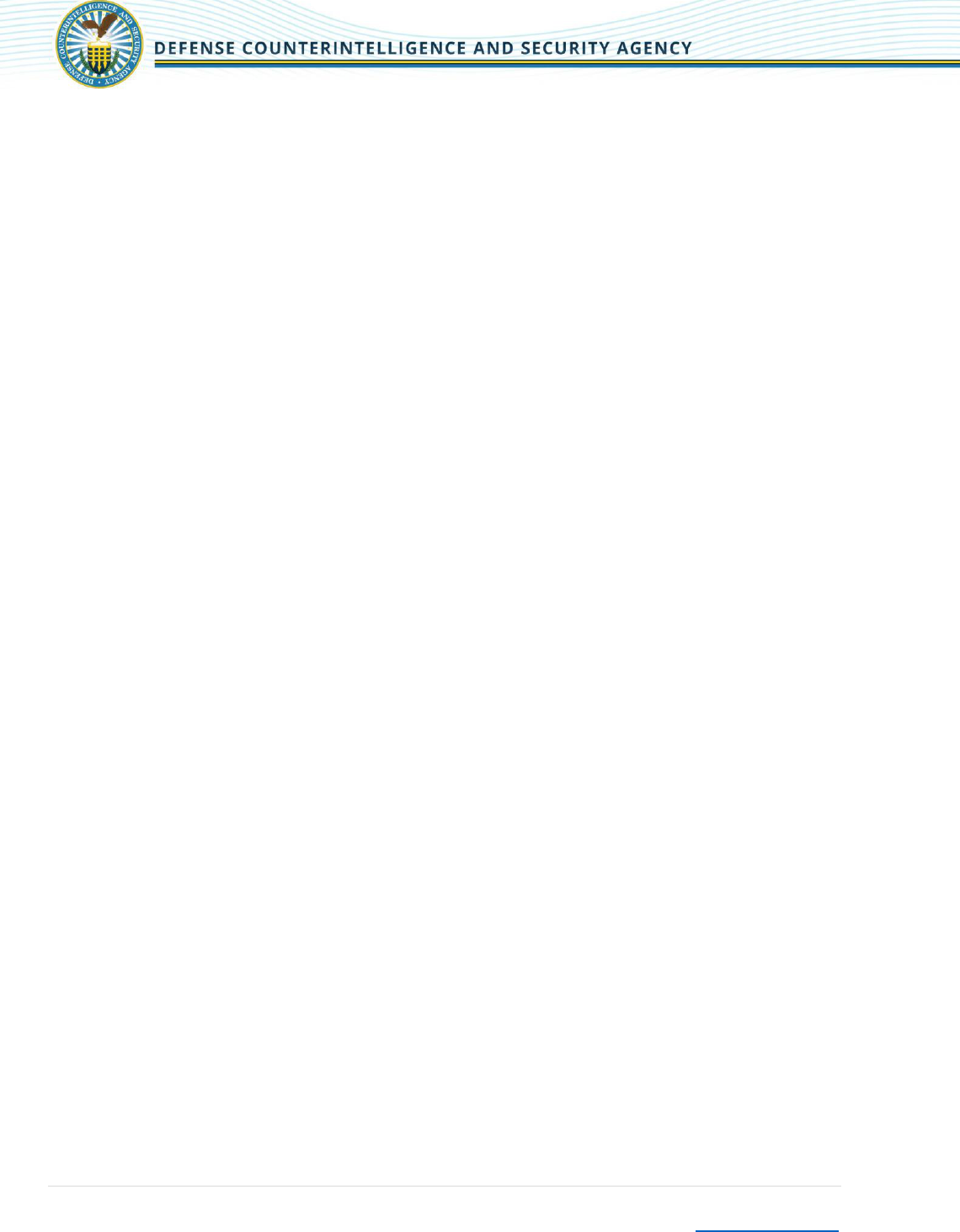
Defense Security Service
FCL Orientation Handbook
Page | 20
Return to Contents
of a sole proprietorship and must always be cleared to the level of the Facility Clearance.
Additionally, the FSO and ITPSO must be listed on the KMP list and must be cleared or processed for a
personnel security clearance at the level of the facility clearance requested.
6.6
Branch or Division Office:
A branch office or division is a separate location of an existing legal entity, referred to as a multiple
facility organization (MFO). Because a branch office is part of the same legal entity as its home office,
they must have the same legal name. In most cases, only the home office requires a facility clearance. A
branch office or division only requires a separate Facility Clearance issued by DCSA if it will need to be
able to safeguard collateral classified information within that office. If it will need to exclusively
safeguard classified information that is not under DCSA cognizance, a Facility Clearance issued by DCSA
is not required, but other requirements will need to be met as determined by the organization that
does have cognizance. If no safeguarding is needed at the branch office, administrative security
requirements, such as personnel security clearance processing and training, are handled by the home
office via its security program.
For branch offices that do require a Facility Clearance, the home office must always be cleared to the
same or a higher level as the branch office. If you are a branch office or division and your home office is
not cleared or in-process for a facility clearance, please contact the DCSA Knowledge Center
immediately. Because the majority of the legal business documents and forms required are provided by
the home office, the FCL package requirements for a branch office or division are minimal. The required
documents include any business records of the legal entity that apply specifically to the branch office,
such as meeting minutes establishing a new office location, a KMP list, a DD Form 441‐1, which is signed
by home office, and a legal organization chart.
The KMP list for a branch office is the only type of KMP list in which the individuals listed are not
required to be designated in legal business documents. The KMP list for a branch office should include a
SMO specific to the site, which is the person who has senior management authority at that office, the
branch office FSO and the ITPSO. The ITPSO must be listed on the branch office KMP list even if this is a
corporate‐wide ITPSO.
6.7
Joint Venture:
Joint Ventures are becoming more and more popular. Joint Ventures, or JVs, can be formed in a couple
of ways.
A JV by Contract is generally a team of two or more legal business entities that has entered into a
contract together to work on a specific project. They do not form a separate legal operating entity, but
have a contract that outlines the terms of their arrangement.
Alternatively, a JV can be formed following a similar agreement between two or more organizations to
form a legal operating entity, such as a Corporation, an LLC, or a Partnership to serve as the JV.
There are 2 key points to consider with JVs:
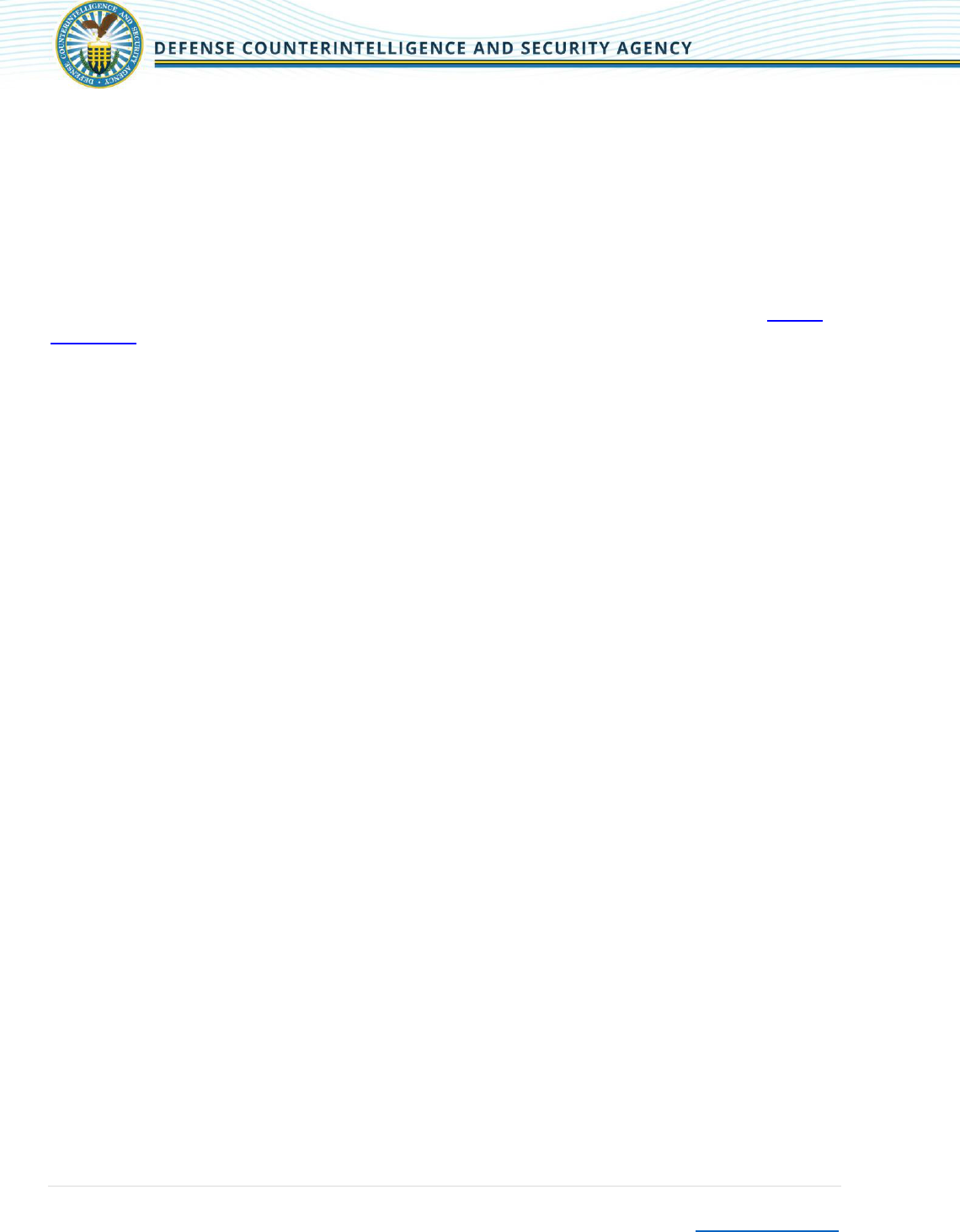
Defense Security Service
FCL Orientation Handbook
Page | 21
Return to Contents
First, in accordance with NISPOM 2‐102b, in order to be eligible for a Facility Clearance, an organization
must be legally organized and existing in the United States. Therefore, JVs by contract that have not
formed a legal registered operating entity are not eligible for a Facility Clearance.
Second, JVs may be either populated or unpopulated. This means that the JV entity either itself has
employees or does not have employees, in which case the employees remain employees of the
organizations that make up the JV. In accordance with NISPOM 1‐201, 1‐202b, 2‐104, the FSO, the
ITPSO, and the SMO must be employees of the organization holding the Facility Clearance. Therefore,
the JV must have an employee(s) who hold these positions. There may be regulations that provide that a
JV may not be populated with individuals intended to perform on contracts awarded to the JV (13 CFR
121.103 (h)). That is, the JV may have its own separate employees to perform administrative functions,
but may not have its own separate employees to perform on contracts awarded to the JV. Note that this
scenario does not conflict with the NISPOM requirements to have employees performing administrative
security functions.
If a classified contract is awarded to the JV, the JV needs a Facility Clearance. If the contracts is
exclusively awarded to one or both JV partners, those organizations require Facility Clearances.
Business records and KMP requirements are determined by the type of legal entity. For example, many
JVs organize as LLCs. This organization should have Articles of Organization, and an Operating
Agreement. Although, it may also have a JV Agreement or it may cover the operation of the organization
as both an LLC and a JV in one or the other. Both the Operating agreement and the JV Agreement should
be provided to DCSA, if both exist.

Defense Security Service
FCL Orientation Handbook
Page | 22
Return to Contents
7.0
Excluded Tier Entity Process
The objective of this process is to clear the sponsored facility and identify tiered companies to exclude
from access to classified information. A tiered company, also known as a parent company, is defined as
a company owning at least a majority of another company’s voting securities. DCSA determines if
tiered companies are required to obtain an FCL or can be excluded from access to classified
information. If a tiered company needs to be cleared, it will also be placed in process and cleared
concurrently with the company that was awarded the contract. This will be determined by the
industrial security representative.
NOTE: Parent companies should be identified in “Package Summary Comments for DCSA” under
the “Industry-DCSA Package Comments” section of the FCL package in NISS. Please include the
parent company’s legal name, CAGE Code, address, and a designated Point of Contact’s name,
email address and phone number.
7.1
Excluded Tier Entity Requirements
The process flow below outlines the required documents the sponsored facility must provide to DCSA on
behalf of any intermediate excluded entities and the ultimate excluded entity. In this process neither the
ultimate excluded entity nor any of the intermediate tiered entities hold a FCL.
Sponsored Facility:
Company A
First Tier Excluded
Entity:
Company B
Second Tier Excluded
Entity: Company C
Third Tier Excluded
Entity: Company D
Ultimate Excluded
Entity: Company E
Acknowledges exclusion
of the Excluded Entities
from access to classified
information.
4) Compiles excluded
entity companies org
charts, KMP lists and
business records
3) Provides company org
chart, KMP lists and
business records to
Ultimate Excluded Parent
2) Provides company org
chart, KMP lists and
business records to
Ultimate Excluded Parent
1) Provides company org
chart, KMP lists and
business records to
Ultimate Excluded
Parent
5) Consolidates a SF-328
for the excluded entities
8) Submits excluded
entities documentation
into NISS; submits
Subsidiary Exclusion
Resolution into NISS
7) Provides documents
to Sponsored Facility
9) Submits all NISS
documents and forms
required per its Business
Structure
Resolution for
intermediate excluded
entities

Defense Security Service
FCL Orientation Handbook
Page | 23
Return to Contents
7.2
Entity Roles and Responsibilities
Entity
Responsibility
Intermediate
Parent/Owner Entity
Submits Company’s Organization Chart, KMP
List, and Business Records to Ultimate
Cleared Entity
Ultimate Parent/Owner
Entity
Provides all Entities Organization Charts, KMP
Lists, and Business Records to Sponsored
Facility
Provides Sponsored Facility the requested
Exclusion Resolution on behalf of its company
and Intermediate parents to be Excluded
Sponsored Facility
(Highest Cleared Facility)
Submits Parent entities to be Excluded
Organization Charts, KMP Lists, Business
Records, and Exclusion Resolution for entities
Submits Subsidiary Exclusion Resolution
acknowledgement
Submits all required NISS Forms and
Documents per its Business
Structure
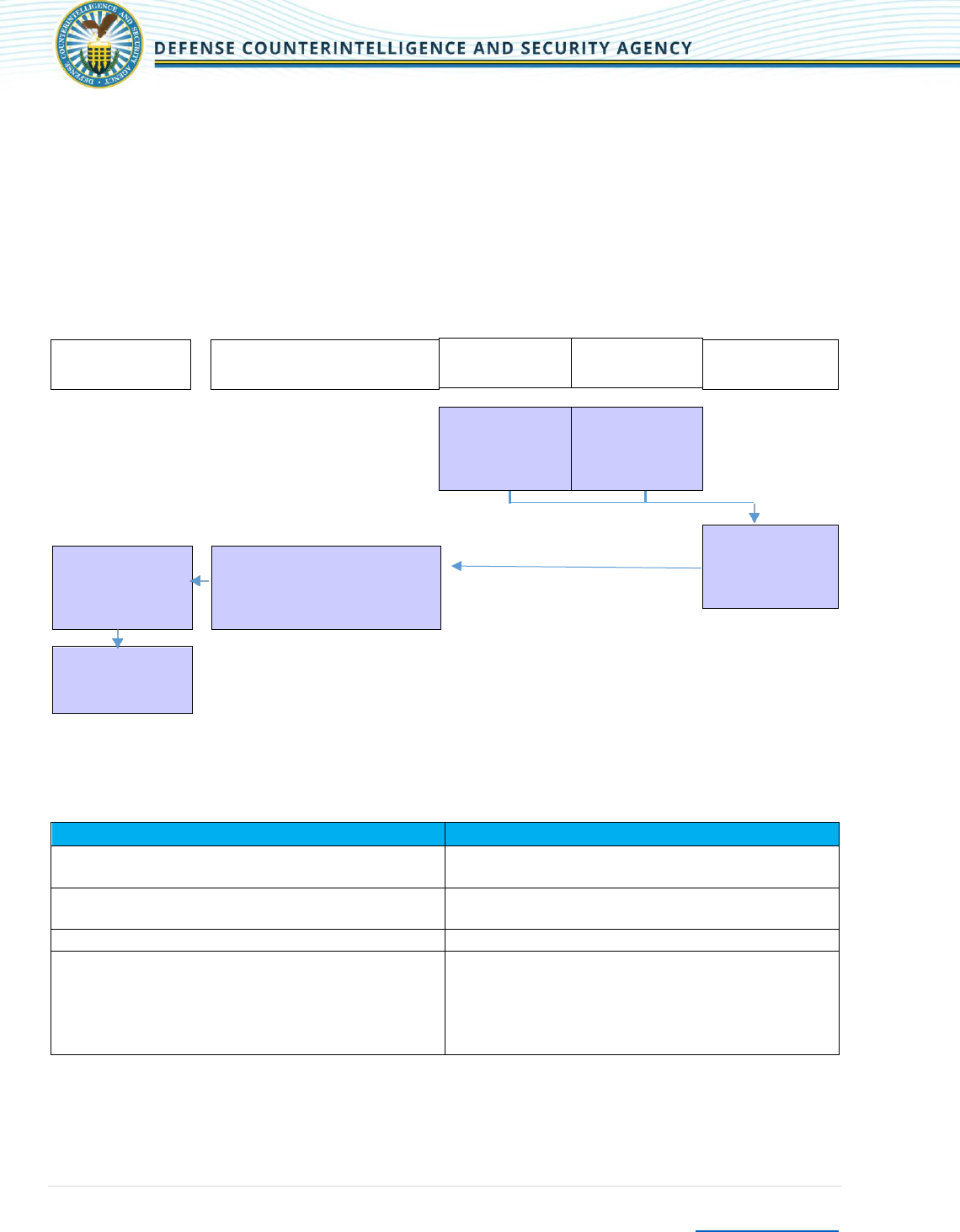
Defense Security Service
FCL Orientation Handbook
Page | 24
Return to Contents
8.0
Highest Cleared Tier Entity
The process flow below documents the required documents the Sponsored Facility and Highest Cleared
Entity must provide to DCSA on behalf of any Intermediate Excluded Entities and the Ultimate Excluded
Entity. In this process the Highest Cleared Entity holds a FCL and provides DCSA updates on behalf of
the Ultimate Excluded Entity and Intermediate Tier Entities. Highest Cleared Entity previously
submitted all required Documents and Forms for Excluded Entities during its FCL process.
8.1
Process Flow
Acknowledges
exclusion of the
parent company from
access to classified
information
Information for Excluded Entities
previously submitted by Highest
Cleared Entity during its FCL process
8.2
Entity Roles and Responsibilities
Entity
Responsibility
Intermediate Entity
Submit changes to Ultimate Entity, if
applicable
Ultimate Entity
Provides Intermediate Entity changes to
Highest Cleared Entity, if applicable
Highest Cleared Entity
Provides Entity changes to DCSA, if applicable
Sponsored Facility
Submits all required NISS Forms and
Documents per its Business
Structure
Submits Subsidiary Acknowledgement of
Exclusion Resolution
5) Submits Subsidiary
Exclusion Resolution
into e- FCL
4) Submits Excluded Entities
information for
Sponsored Facility
6) Submits all
documents and forms
required per its
Business Structure
Sponsored Facility:
Company A
First Tier Excluded Entity:
Company B
Ultimate Excluded
Entity: Company E
3) Submits all
Excluded Entity
company updates to
Highest Cleared
Facility
2) Submits company
updates to Ultimate
Excluded Entity
1) Submits company
updates to Ultimate
Excluded Entity
Third Tier Excluded
Entity: Company D
Second Tier
Excluded
Entity: Company C
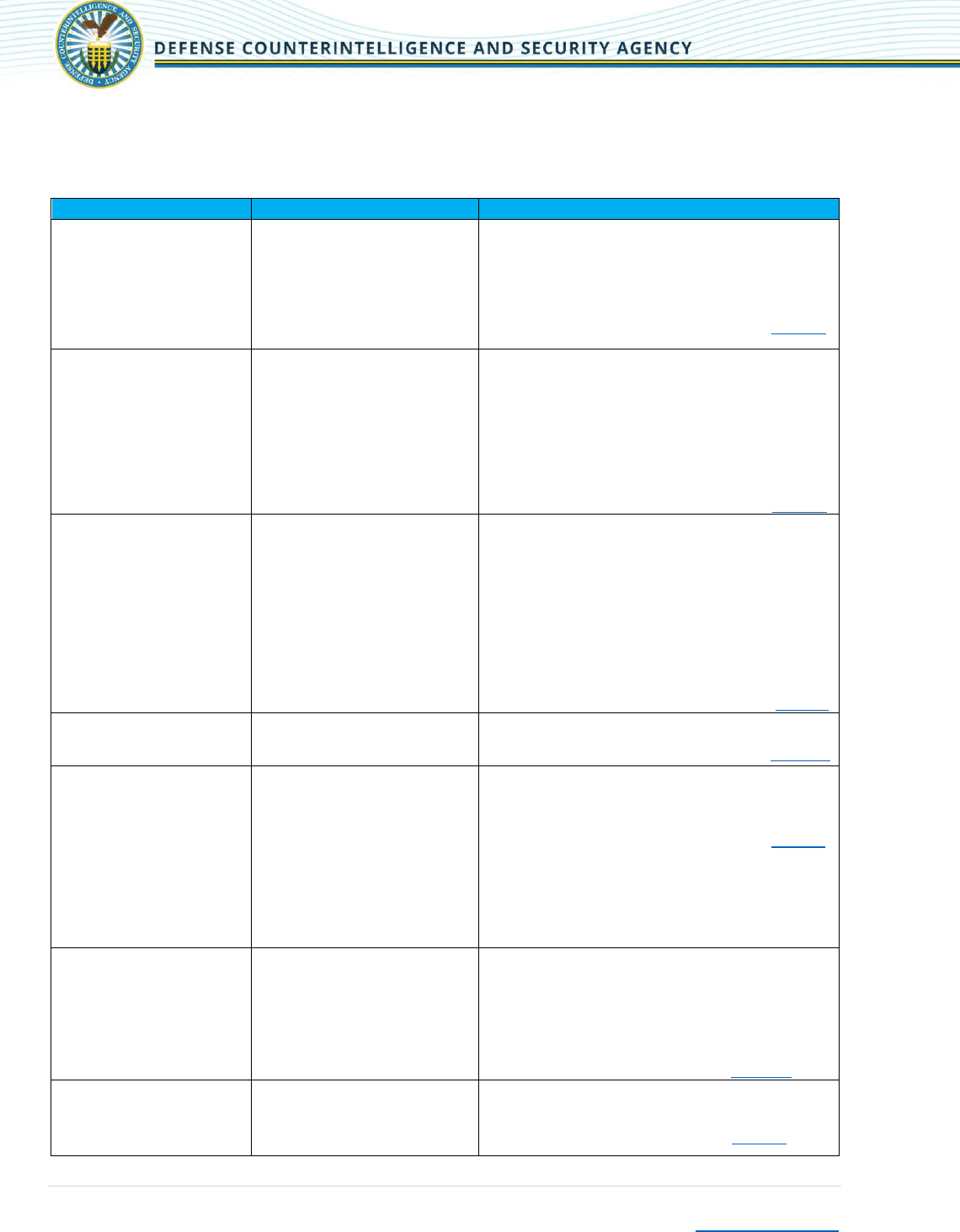
Defense Security Service
FCL Orientation Handbook
Page | 25
Return to Contents
9.0 Accounts and Systems
The table below outlines the Accounts and Systems the FSO must activate or leverage to submit
additional documents for its Facility to receive its FCL and to maintain a compliant security program
after obtaining the FCL.
Accounts
Reason for Account
Description
Commercial and Government
Entity (CAGE) Code
Provides a standardized method
to identify your Specific facility
The CAGE Code is a five-character ID number used extensively
within the federal government, assigned by the Department
of Defense’s Defense Logistics Agency (DLA). If your company
does not already have a CAGE Code for the facility requiring
clearance, one may be obtained by visiting System for Award
Management (SAM) or DLA CAGE if you are a subcontractor.
SAM LINK
Joint Personnel Adjudication
System (JPAS)
System to serve as the record to
perform comprehensive personnel
security, suitability, and credential
eligibility management.
*Account MUST be established
within 30 days of the FCL being
issued.
JPAS is the system of record (until April 2021 when DISS fully
deploys) for personnel security clearances. All PCL eligibility
and access records for KMPs and those requiring access to
classified information must be kept up-to-date in JPAS.
Because a person cannot view or take action on their own
JPAS record, cleared companies must have at least two (2)
JPAS account holders to comply with NISPOM requirements.
The Defense Manpower Data Center (DMDC) is the functional
manager of JPAS. Full JPAS Account Request procedures are
available on their website. JPAS LINK
Defense Information System for
Security (DISS)
System to serve as the record to
perform comprehensive personnel
security, suitability, and credential
eligibility management.
Once fully deployed (APR 2021), DISS will replace JPAS. DISS
provides secure communications between Adjudicators,
Security Officers, and Component Adjudicators in support of
eligibility and access management. All PCL eligibility and
access records for KMPs and those requiring access to
classified information must be kept up-to-date in DISS.
Because a person cannot view or take action on their own
DISS record, cleared companies must have at least two (2)
DISS account holders to comply with NISPOM requirements.
The Defense Manpower Data Center (DMDC) is the functional
manager of DISS. Full DISS Account Request procedures are
available on their website. DISS LINK
Electronic Questionnaires for
Investigations Processing(e-QIP)
Submit KMP information through
this system as part of the PCL
process
e-QIP allows the user to electronically enter, update and
transmit their personal investigative data over a secure internet
connection to a requesting agency. E-QIP LINK
National Industrial Security
System (NISS)
System of Record for Facility
Clearances
*NISS is behind a system called the
NISP Central Access Information
Security System (NCAISS). This
web‐based application provides
PKI‐based authentication for DCSA
applications. You will need a PKI
certificate to obtain access to
NCAISS and NISS.
NISS replaces and expands upon capabilities of two legacy
systems, ISFD, and e-FCL, and automates the Initial Facility
Clearance process. This system also expands access and
transparency to security professionals’ facility information.
NISS LINK
Secure Web Fingerprint
Transmission (SWFT)
Submit KMP fingerprints through
SWFT or third party vendor to
complete KMP’s PCL process
*Account created after Facility is
issued its FCL.
SWFT allows the submission of fingerprints to be uploaded
electronically through its system. (All fingerprint images that
are provided in support of background investigations must
be captured and submitted electronically)
For SWFT access, submit DMDC’s new Personnel Security
System Access Request (PSSAR) form to the DMDC Contact
Center for processing SWFT LINK
Security Training,
Education, and
Professionalization
Portal (STEPP)
Provides courses for Contractor’s
security professionals
Program maintaining the list of courses DCSA provides to
security professionals. The courses are intended for use by
Department of Defense and other U.S. Government personnel
and contractors within the NISP. STEPP LINK
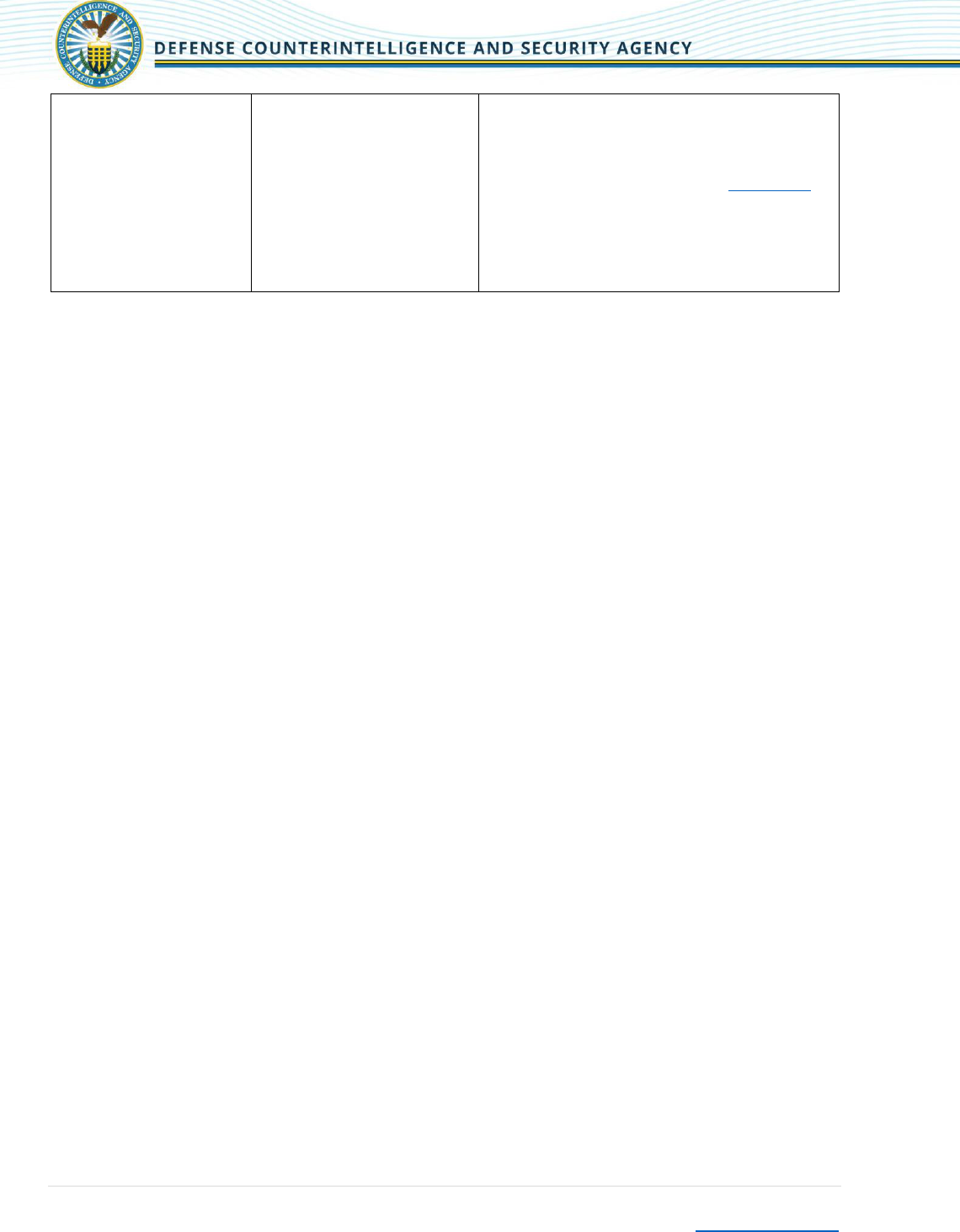
Defense Security Service
FCL Orientation Handbook
Page | 26
Return to Contents
National Industrial Security
Program (NISP) Enterprise
Mission Assurance Support
Service (eMASS)
(See Appendix C for details.)
Provides standardized Risk
Management Framework (RMF)
process support and storage for
cyber security artifacts for
assessment by cleared industry
and DCSA security professionals
*Account Requirements:
- Complete DISA eMASS Training
- Complete DoD Cyber Awareness
Challenge
- Submit DD 2875 SAAR
eMASS is an application that automates the DCSA Assessment
and Authorization Process Manual (DAAPM) tasks supporting
the Risk Management Framework (RMF) used by the
Department of Defense, other US Government Agencies, and
the NISP industry participants. The NISP eMASS instance is
available at the link. NISP eMASS Link
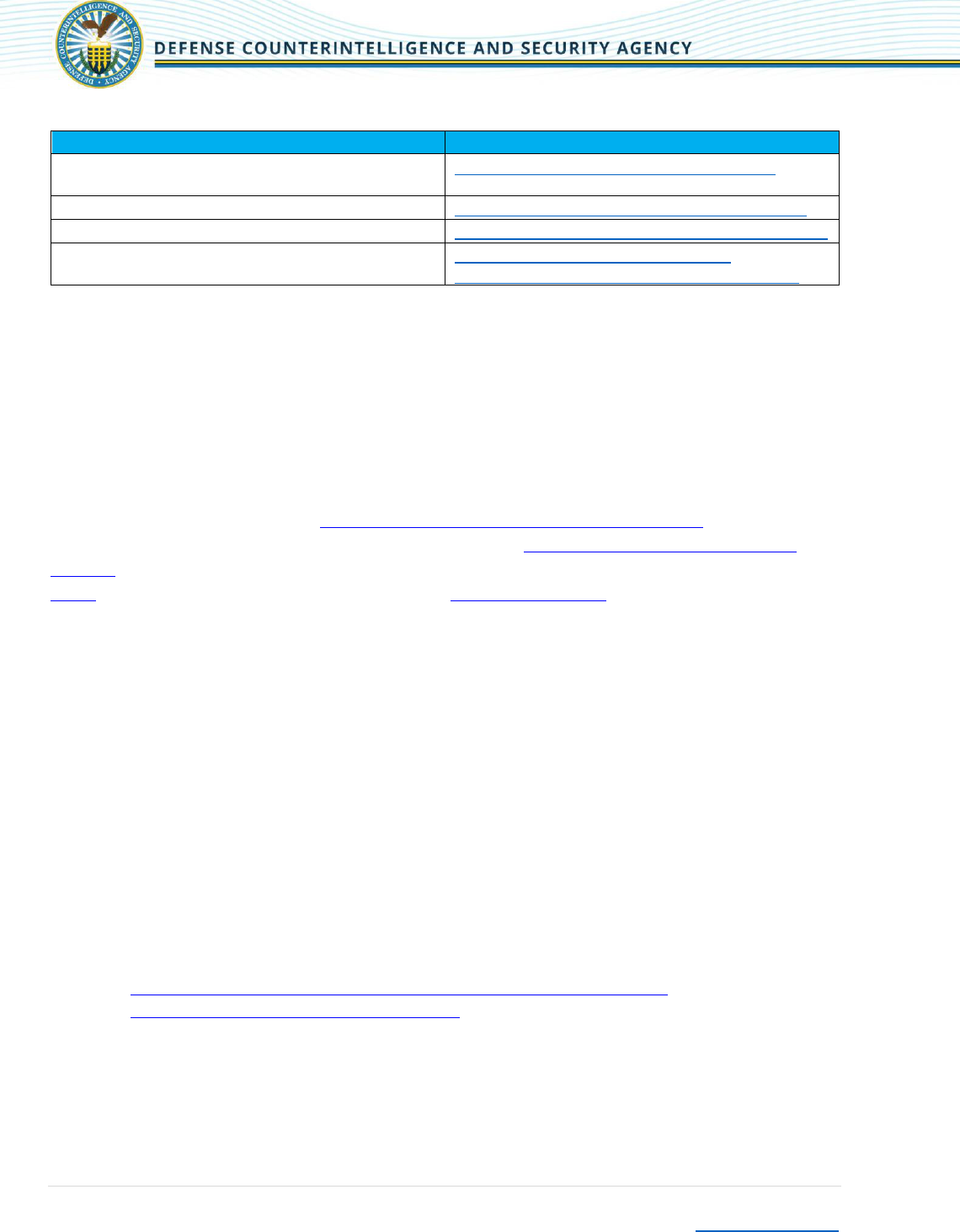
Defense Security Service
FCL Orientation Handbook
Page | 27
Return to Contents
10.0
Training
Training Classes
Link
Center for Development of Security Excellence (CDSE)
Toolkits
https://www.cdse.edu/toolkits/index.html
FSO Toolkit
https://www.cdse.edu/toolkits/fsos/index.php
ITPSO Toolkit
https://www.cdse.edu/toolkits/insider/index.php
DCSA Risk Management Framework Toolkit
RMF Knowledge Service (See Appendix C for details.)
https://www.dcsa.mil/mc/ctp/tools/
https://rmfks.osd.mil/rmf/Pages/default.aspx
The CDSE Toolkits are a repository of role-based resources that serve as a one-stop shop for security
essentials. Each toolkit points you to the resources you need to help perform your role. The FSO Toolkit
and Insider Threat Toolkit will be one of your most important resources while you are participating in
the NISP.
10.1
FSO Training
A list of the required FSO Training is available in the FSO Toolkit. FSO’s of companies that will require
safeguarding should sign up for the FSO Program Management for Possessing Facilities. FSO’s of
companies that do not require safeguarding should sign up for FSO Orientation for Non‐Possessing
Facilities. Both courses are offered on the Security Training, Education and Professionalization Portal, or
STEPP, which is available on the DCSA website under Information Systems. You will need to take each
course as well as the corresponding exam. The sooner you take this training, the easier it will be to set
up your security program and understand your requirements under the NISP.
10.2
Insider Threat Program Training
The requirements for your Insider Threat Program can be found in NISPOM 1‐202 and ISL 2016-02. You
are required to nominate an Insider Threat Program Senior Official (ITPSO). This person will be
considered a KMP along with the FSO, SMO, and other KMP(s). The ITPSO can be the same individual as
the FSO, or it can be a different person. Corporate families are able to nominate a corporate ITPSO.
The ITPSO MUST take the training listed below within 30 days of being formally appointed ITPSO. The
ITPSO may choose to use an existing training course to meet this requirement called Establishing an
Insider Threat Program for your Organization. This course is offered on STEPP, which is available on the
DCSA website under Information Systems.
•Establishing an Insider Threat Program for Your Organization INT122.16
•Insider Threat Awareness Course INT101.16
The ITPSO must also certify that a written Insider Threat Program is in place. Your ISR will talk to you
more about this when they are onsite for the Initial Orientation Meeting. Additional information,
including a plan template and job aid, is available at the Industry Insider Threat and Resources link in the
most requested links section of the DCSA website.
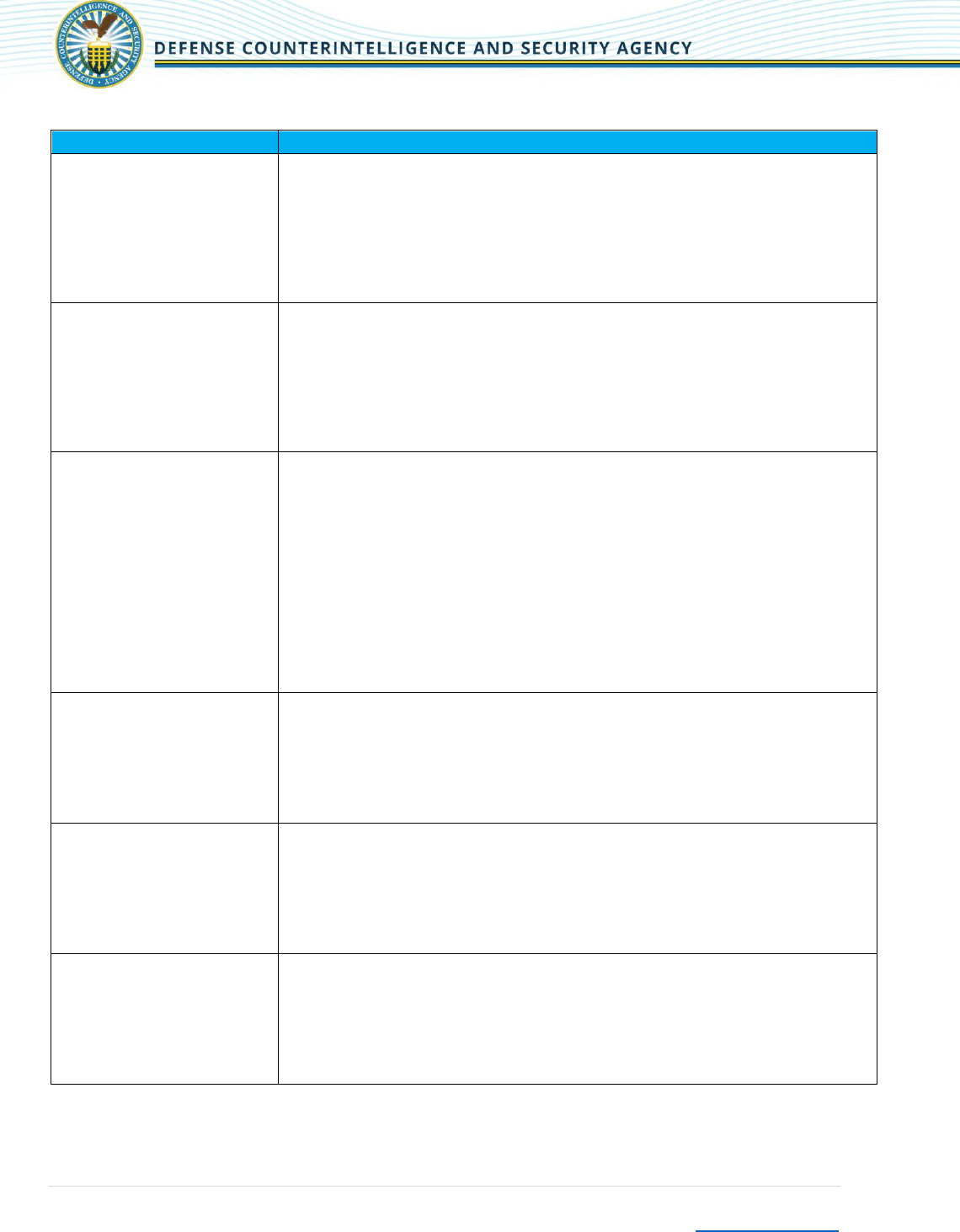
Defense Security Service
FCL Orientation Handbook
Page | 28
Return to Contents
Appendix A: Defining KMP Authorities of Position
KMP Role
Authorities of the Position
CEO
Highest ranking executive manager in a corporation or organization’s by-laws or
organizational documents
Responsible for the overall success/management of the organization
Ultimate authority to make final decisions for an organization
Responsibility for creating, planning, implementing, and integrating the strategic
direction/vision of an organization
Reports to a Board of Directors and serves at the discretion of the
Board of Directors
President
Creates, communicates, and implements the organization's vision, mission, and
overall direction
Leads, guides, directs, and evaluates the work of other executive leaders including
senior vice presidents, vice presidents and directors
Formulates and implements the strategic plan that guides the direction of the
business
Oversees the organization in accordance with the direction established in the
strategic plans
Chairman of the Board
Trusted with the responsibility of chairing a board or organization
Governs the board according to the bylaws of the organization. The chairman must
attend the board meetings and committees regularly.
Committed to board duties and has vast knowledge of the organization itself
Evaluates annual performance of the organization
Chairman rarely involves themselves in the company's day-to-day operations,
instead concentrating on the bigger picture and various strategies to increase the
company's bottom line
Institutes company policies and guidelines, and make certain that they are carried
out via upper management
Recruits, interviews, and hires the CEO
Votes on key issues surrounding the company; when board is at a standstill on an
issue, the chair makes the final decision
Manager
For an LLC, only a manager or authorized officer can bind the LLC as specified in the
Operating Agreement or when there is no operating agreement, State Law where
LLC is formed
Elected by the members
Decision authority on key policies, transactions, and establishment of guidelines for
how the LLC will operate
Can appoint officers to serve at the pleasure of the manager
General Partner
Full management control and also accepts full personal responsibility for
partnership liabilities as specified by state law where the partnership was formed
and the partnership agreement
Right to manage the business, conduct transactions on the behalf of the business,
and are liable for the business’ debts
Commonly is active in the day-to-day operations of the business
May be an individual or company
Shareholder
Makes a financial investment in the corporation, which entitles those with voting
shares to elect the directors as specified in the Shareholders agreement and/or
state law
Does not normally have any rights to be involved directly in company management
Connection to company management is typically via the Board of Directors
If shareholder is not satisfied with the performance of the directors,
they may remove the directors or refuse to re-elect them
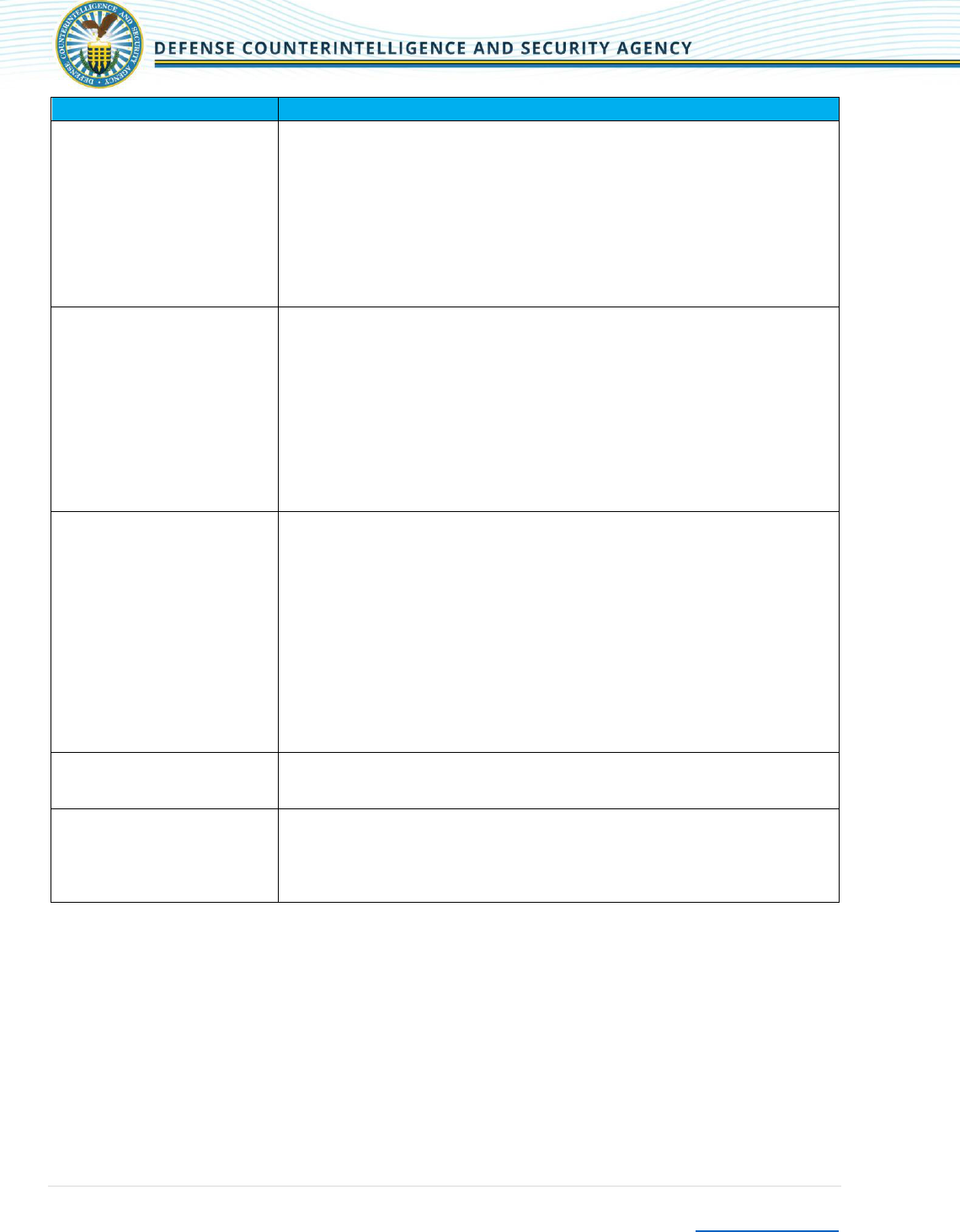
Defense Security Service
FCL Orientation Handbook
Page | 29
Return to Contents
KMP Role
Authorities of the Position
Board of Director
Protects shareholders’ assets and ensure they receive a decent return on
investment
Provides oversight and strategic direction on behalf of the shareholders as
authorized in the by-laws or State law
Monitors corporate governance within an organization
Approves financial statements
Selects and evaluates CEO; approves appropriate compensation for CEO
Evaluates attractiveness of and pay dividends
Oversees share repurchase programs, recommend stock splits, etc.
Recommends or discourages mergers and acquisitions
Vice President
Second in command in an organization and has specific responsibilities
depending on the needs of his or her organization as directed by the by- laws
Assists in formulating and implementing the strategic plan that guides the
direction of the business or their area of responsibility
Leads, guides, directs, and evaluates the work of other executive leaders
including assistant vice presidents, directors, and managers
Achieves the organization's overall strategic goals and profitability
requirements as determined by the strategic plans
Assists creating, communicating, and implementing the organization’s vision,
mission, and overall direction
In the President’s absence, the Vice President acts in the role
Chief Operating Officer (COO)
Responsible for the daily operations.
Provides communication, leadership, and guides management as necessary to
ensure that company has the proper operational controls, administrative and
reporting procedures in place to effectively grow the organization
Ensures effective communication with the President/CEO by keeping him/her
informed of daily operations
Ensures that operating objectives and standards of performance are
understood by management and employees
Ensures that Company complies with all applicable legal and regulatory
requirements and, where appropriate, best practice to maximize the financial
integrity of Company
Ensures appropriate and satisfactory systems are in place for monitoring
Company performance against planned and budgeted expectations
Limited Partner
Generally does not have any kind of management responsibility.
They are not material participants, strictly investors
Share in profits and losses based on share of ownership
Member
Similar to a stockholder in a corporation. Responsible for formation of the LLC
and/or having owning interest in the LLC as designated in the Operating
Agreement and/or State Law when there is no Operating Agreement
Chooses a manager to manage the LLC
Can also be the manager
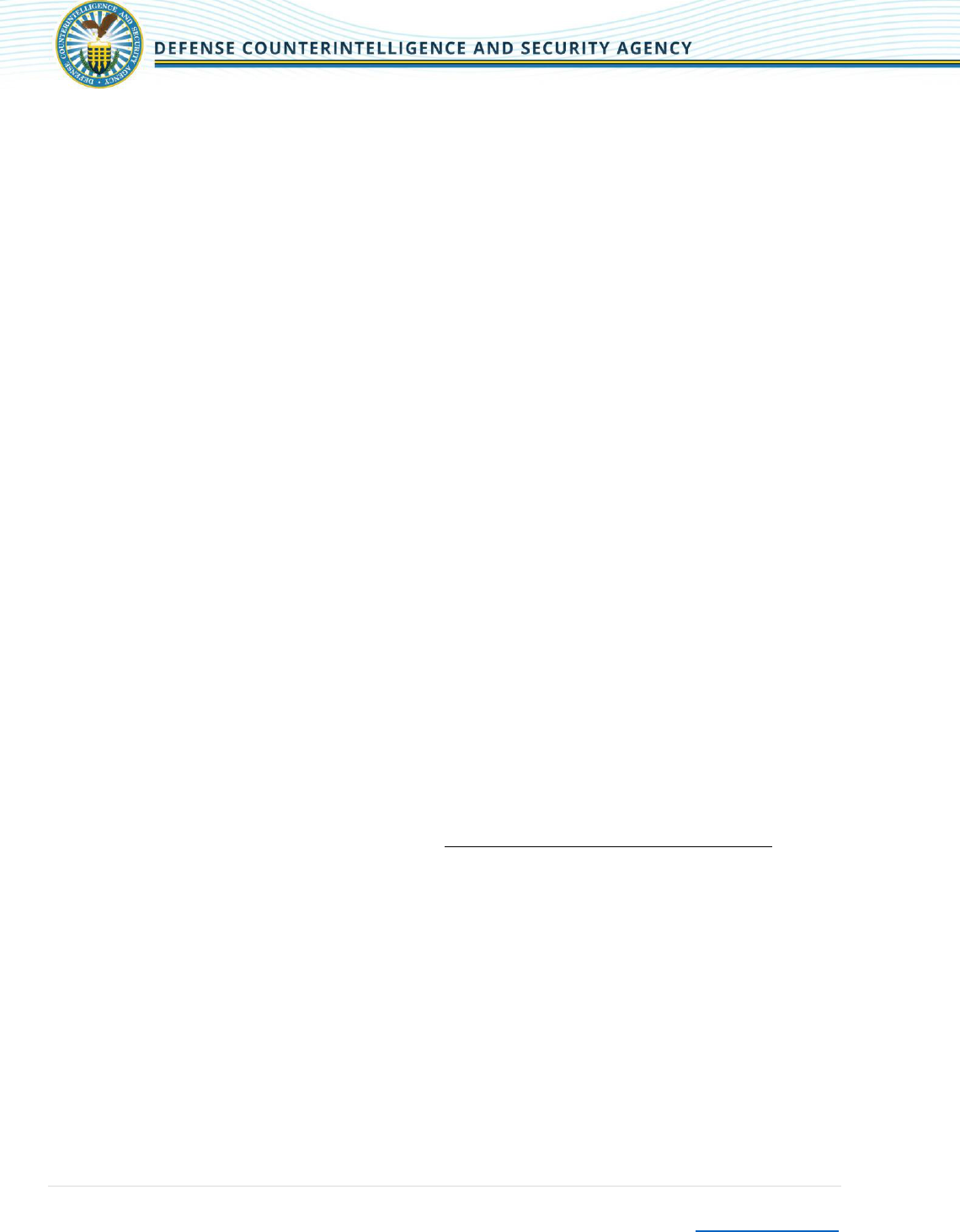
Defense Security Service
FCL Orientation Handbook
Page | 30
Return to Contents
Appendix B: Exclusion Resolutions
B.1
Highest Cleared Entity Noting Excluded Entity’s Exclusion and Resolution to Exclude
Parent Organization
I, (Insert Full Name), the duly elected Secretary of (Insert Name of Highest Cleared Entity), a corporation in the
State of (Insert Name of State), do hereby certify that the following is a true and complete copy of a resolution
passed at a meeting of the Board of Directors of said Corporation, at which a quorum was present, duly called, and
held
(Insert Month Day, Year).
BE IT RESOLVED that officials of (Insert Name of Highest Tier Excluded Entity and any Intermediate
Entities), the ultimate tier entity organization, or any of the intermediate tier entities of (Insert Name and Address
of Highest Cleared Entity), shall not require and shall not have access to classified information in the custody of
(Insert Name of Highest Cleared Entity), a subsidiary organization or any other facilities reporting to (Insert Name
of Highest Cleared Entity) that require access to classified information.
BE IT FURTHER RESOLVED that (Insert Name of Highest Cleared Entity) hereby acknowledges the
execution of a resolution by (Insert Name and Address of Highest Excluded Entity) whereby the Corporation, its
officers and directors, as such, and intermediate entities will not require and will not have access to classified
information in the custody of (Insert Name of Highest Cleared Entity), a subsidiary corporation, and further that
this action will not affect adversely the policies of said subsidiary involving the security and safeguarding of
classified information or performance of classified contracts.
BE IT FURTHER RESOLVED that these actions of the Board of Directors of the (Insert Name of Highest
Cleared Entity) are taken for the purpose of exempting the (Insert Name of Highest Tier Excluded Entity and
Intermediate Tiers) from the necessity of being processed for a Facility Security Clearance equivalent to that held
by the (Insert Name of Highest Cleared Entity) in conformity with the “National Industrial Security Program
Operating Manual.”
IN WITNESS WHEREOF I have hereunto set my hand and affixed the seal of (Insert Name of Highest
Cleared Entity) this (Insert Date).
Signature
Note: Two copies shall be furnished to the local DCSA Industrial Security field office with an original signature and
corporate seal on each. One copy shall be furnished to the subsidiary. Both the highest tiered excluded entity and
the highest cleared subsidiary must execute a “Certificate Pertaining to Foreign Interest” (SF 328).
If the parent is to be excluded from a higher category of classified information, the next to last paragraph should
read “… from the necessity of having to be processed for a Facility Security Clearance equivalent to that held by
the (Name of Subsidiary).”
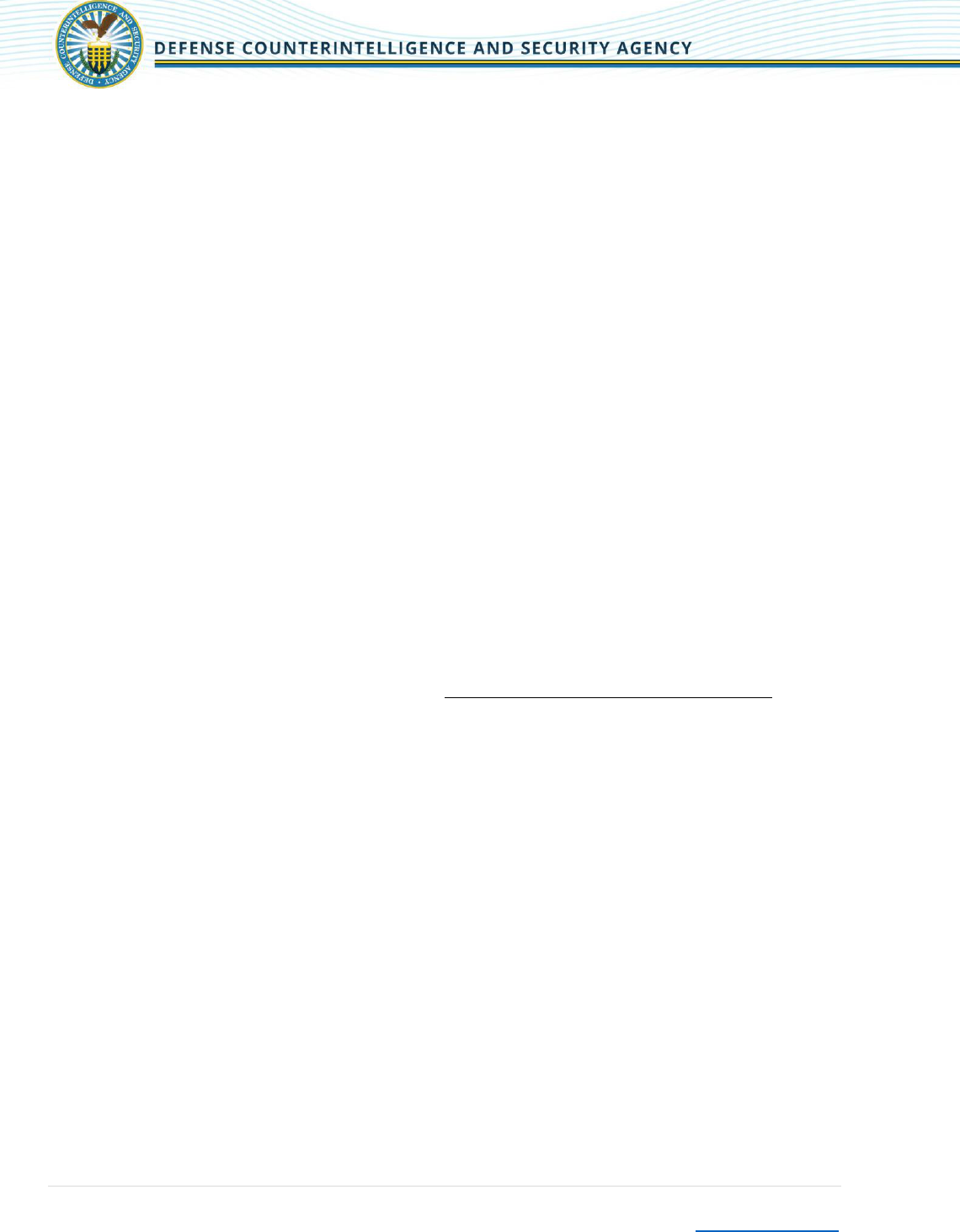
Defense Security Service
FCL Orientation Handbook
Page | 31
Return to Contents
B.2
Exclusion Resolution of Corporate Organization
I, (Insert Full Name), the duly elected Secretary of (Insert Name of Highest Tier Excluded Entity), a corporation
organized in the State of (Insert Name of State), located at (Insert Address of Highest Tier Excluded Entity) do
hereby certify that the following is a true and complete copy of a resolution passed at a meeting of the Board of
Directors of said Corporation, at which a quorum was present, duly called and held (Insert Month Day, Year).
BE IT RESOLVED that (Insert Name and Address of Highest Tier Excluded Entity and Intermediate Entities),
its officers and directors, as such, will not require and will not have access to classified information in the custody
of (Insert Name of Highest Cleared Entity), or any other facilities reporting to (Insert Name of Highest Cleared
Entity) that require access to classified information, and further that (Insert Name of Highest Cleared Entity), has
been delegated full authority to act completely independent of (Insert Name of Highest Tier Excluded Entity and
intermediate tiers) in all matters that involve or relate to (Insert Highest Cleared Entity’s) responsibility to perform
on classified contracts, to include safeguarding classified information.
BE IT FURTHER RESOLVED that this action is taken for the purpose of exempting (Insert Name of Highest
Tier Excluded Entity and Intermediate Tiers) from the necessity of being processed for a Facility Security Clearance
(FCL) in conformity with the “National Industrial Security Program Operating Manual (NISPOM).” In lieu of a
Facility Security Clearance, (Insert Name of Highest Tier Excluded Entity) will report any changed conditions, as
defined in NISPOM 2-102, within the complete organizational structure that may impact the FCL eligibility of
(Insert Name of Highest Cleared Facility). Any changes that may impact FCL eligibility of (Insert Name of Highest
Cleared Facility) will be disclosed to the Facility Security Officer at (Insert Name of Highest Cleared Facility) or in
special circumstances, directly to the Defense Security Service.
IN WITNESS WHEREOF I have hereunto set my hand and affixed the seal of (Insert Name of Company) this
(Insert Date).
Signature
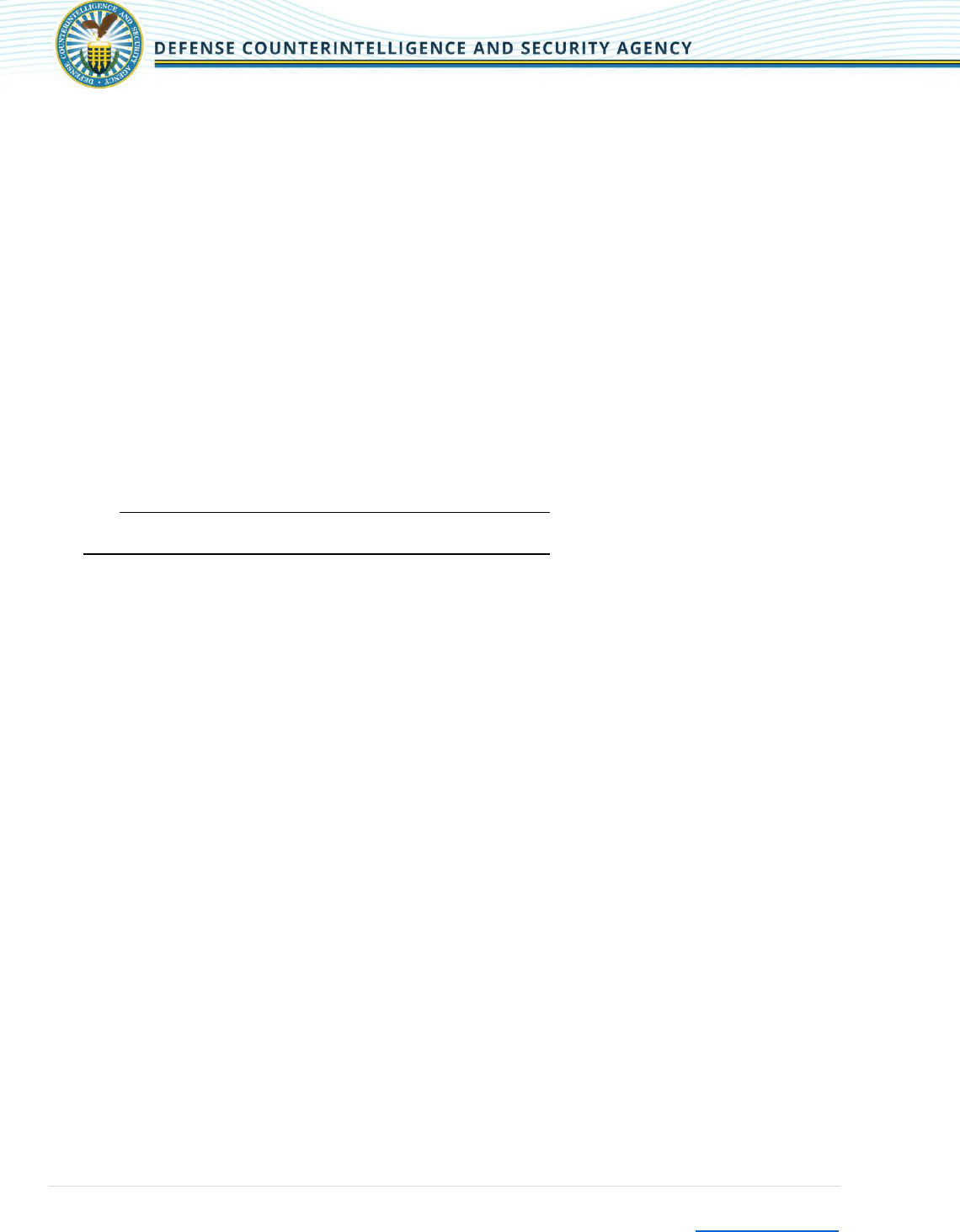
Defense Security Service
FCL Orientation Handbook
Page | 32
Return to Contents
B.3
Exclusion Resolution for LLC Member (Organization)
I, (Insert Full Name), the duly elected (Management Official Title) of (Insert Name of LLC Member), a (Type of
Organization) organized in the State of (Insert Name of State), located at (Insert Address of LLC Member) do hereby
certify that the following is a true and complete copy of a resolution passed at a meeting of the (Type of
Management Board) of (Management Officials) of said (Type of Organization), at which a quorum was present,
duly called and held (Insert Month Day, Year).
BE IT RESOLVED that (Insert Name and Address of LLC Member), its management officials, as such, will not require,
shall not have, and can be effectively and formally excluded from access to classified information disclosed to
(Insert Name of subject LLC), a Limited Liability Company, and further that (Insert Name of subject LLC), has been
delegated full authority to act completely independent of (Insert Name of LLC Member) in all matters that involve
or relate to (Insert Name of subject LLC)’s responsibility to safeguard information.
BE IT FURTHER RESOLVED that (Insert Name and Address of LLC Member), is taken for the purpose of exempting
the (Insert Name of LLC Member) from the necessity of being processed for a Facility Security Clearance in
conformity with the “National Industrial Security Program Operating Manual.”
Signature
Date
(Senior Management Official of LLC Member)
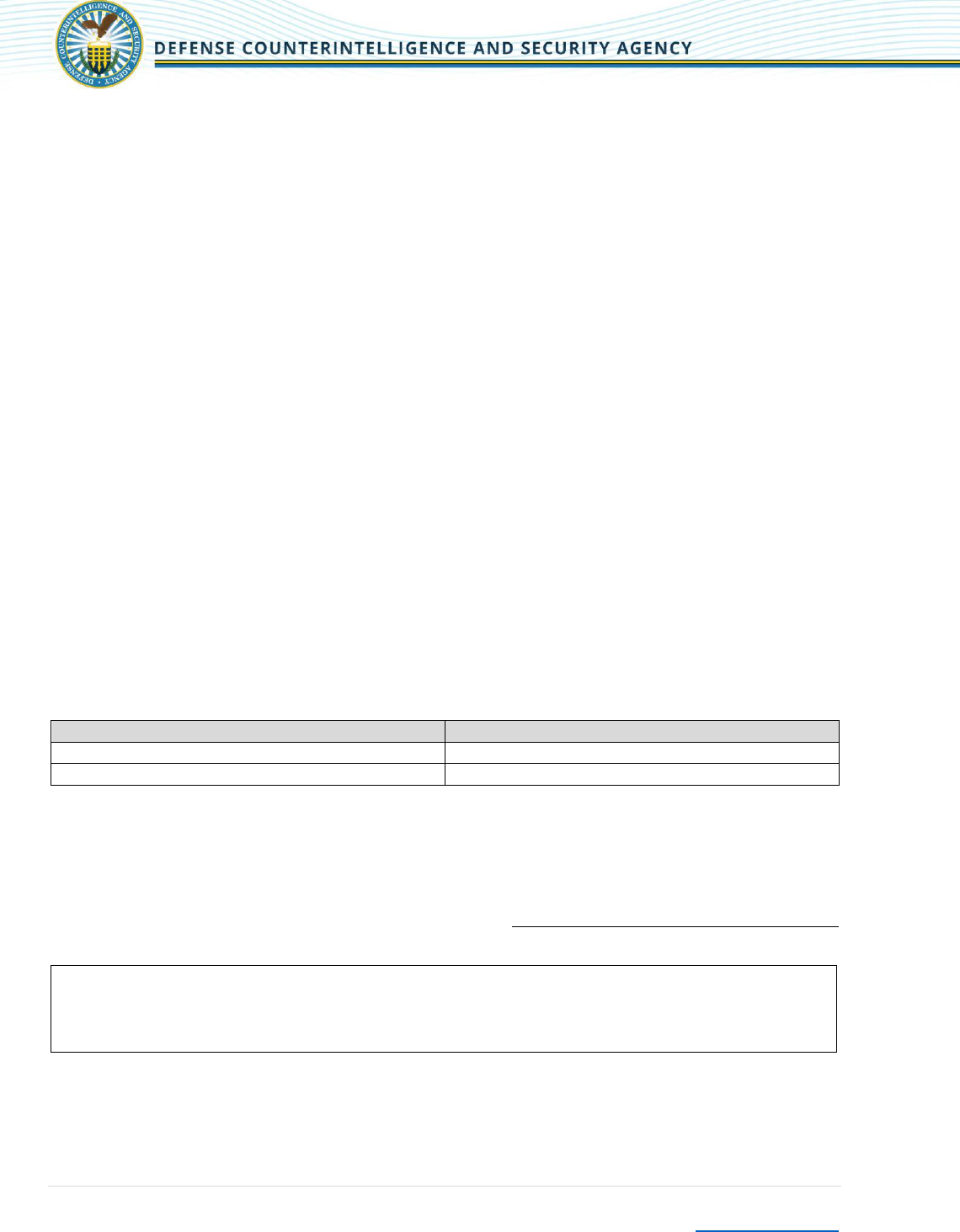
Defense Security Service
FCL Orientation Handbook
Page | 33
Return to Contents
B.4
Exclusion Resolution for Certain Directors, Officers, and LLC Member (if Person)
I, (Insert Full Name), do hereby certify that I am (Identify eligible KMP officer/position title) of (Insert Name of
Corporation), a (Insert Corporation, Company) organized and existing under the laws of the State of (Insert Name of
State), and that the following is a true and correct copy of a resolution adopted by the Board of Directors,
management board, or a similar type of executive body of the said (Insert Corporation, Company) at a meeting
held at (Insert Location) on (Insert Month, Day, Year) at which time a quorum was present.
WHEREAS, current Department of Defense Regulations contain a provision making it mandatory that the
Chairman of the Board, Senior Management Official and Facility Security Officer meet the requirements for
eligibility for access to classified information established for a contractor facility security clearance; and
WHEREAS, said Department of Defense Regulations permit the exclusion from the personnel of the
requirements for access to classified information of certain members of the Board of Directors and other officers,
provided that this action is recorded in the corporate minutes.
NOW THEREFORE BE IT DECLARED that the Chairman of the Board, Senior Management Official and
Facility Security Officer at the present time do possess, or will be processed for, the required eligibility for access to
classified information; and
BE IT RESOLVED that in the future, when any individual enters upon any duties as Chairman of the Board,
Senior Management Official and Facility Security Officer, such individual shall immediately make application for the
required eligibility for access to classified information; and
BE IT RESOLVED AND DIRECTED that the following members of the Board of Directors and other officers
or members shall not require, shall not have, and can be effectively and formally excluded from access to all
CLASSIFIED information disclosed to the corporation/company and shall not affect adversely corporate/company
policies or practices in the performance of classified contracts for the Department of Defense or the Government
contracting activities (User Agencies) of the National Industrial Security Program.
NAME
TITLE
IN WITNESS WHEREOF I have hereunto set my hand and affixed the seal of (Insert Name of Company) this
(Insert Day/Month of Year).
Signature
Note: Two copies shall be furnished to the local DCSA Industrial Security field office with an original signature
and
corporate seal on each. One copy shall be furnished to the subsidiary. Both the highest excluded entity
parent and highest cleared subsidiary must execute a “Certificate Pertaining to Foreign Interest” (SF 328).
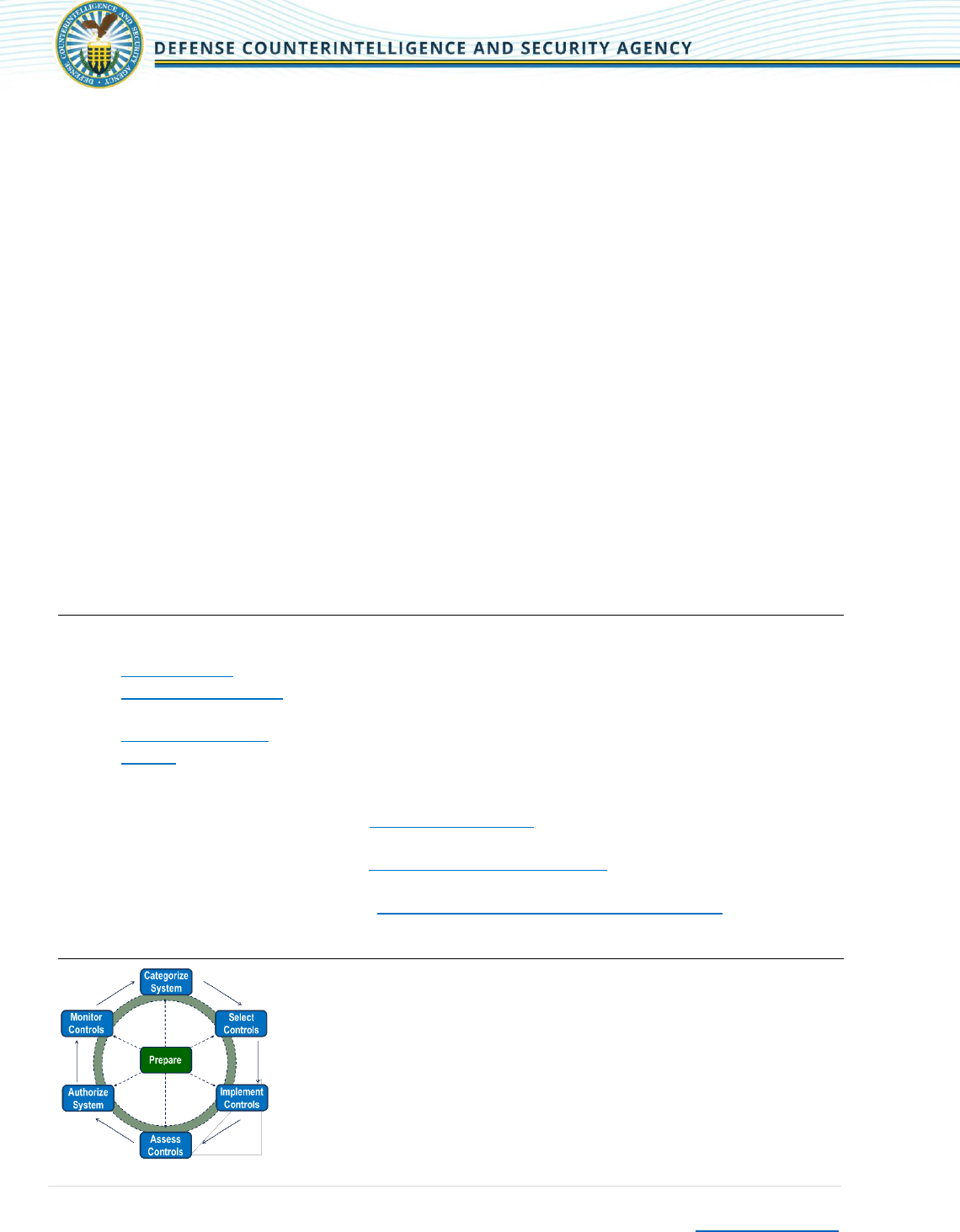
Defense Security Service
FCL Orientation Handbook
Page | 34
Return to Contents
Appendix C: Navigating the National Industrial Security Program (NISP)
Risk Management Framework (RMF) Process
NISP Authorization Office
The NISP Authorization Office (NAO) as part of the DCSA Industrial Security Field Operations (IO Directorate) is
responsible for the following:
Risk management processes and procedures for classified information technology (IT) systems and
architectures operated by cleared industry
Management of the DCSA Assessment and Authorization process
Oversight of authorized systems located at cleared contractor sites
Technical oversite and policy for the cyber security workforce
Risk Management Support Elements
The risk management capability is composed of the primary elements:
Policy
Process
Cyber Security Workforce Professionals
Policy
The overarching policy is derived from the following primary documents:
DOD 5220.72-M National Industrial Security Program Operating Manual (NISPOM)
NISP SP 800-37 Rev _ Risk Management Framework for Information Systems and Organizations:
a System Life Cycle Approach for Security and Privacy
NIST SP 800-53 Rev _ Security and Privacy Controls for Federal Information Systems and Organizations
DAAPM – DCSA Assessment and Authorization Process Manual
The NIST Computer Security Resource Center (CSRC) contains numerous other policy documents referenced in
the DAAPM. The library is located at: https://csrc.nist.gov/
The DoD directives library is available at: https://www.esd.whs.mil/DD/
The DCSA RMF Resource Center is located at: https://www.DCSA.mil/ma/ctp/io/nao/rmf/
Process
The NAO risk management process is contained in the DAAPM (Use link under
the Policy Section). The RMF process overview is provided as described by the
NIST SP 800-37. The NISP specific process and activities are contained in the
DAAPM. New NISP participants should read both of these policies documents to
support RMF implementation. For RMF process questions contact your assigned
Information Systems Security Professional or the DCSA RMF mailbox (See RMF
Resources).
RMF Process Overview
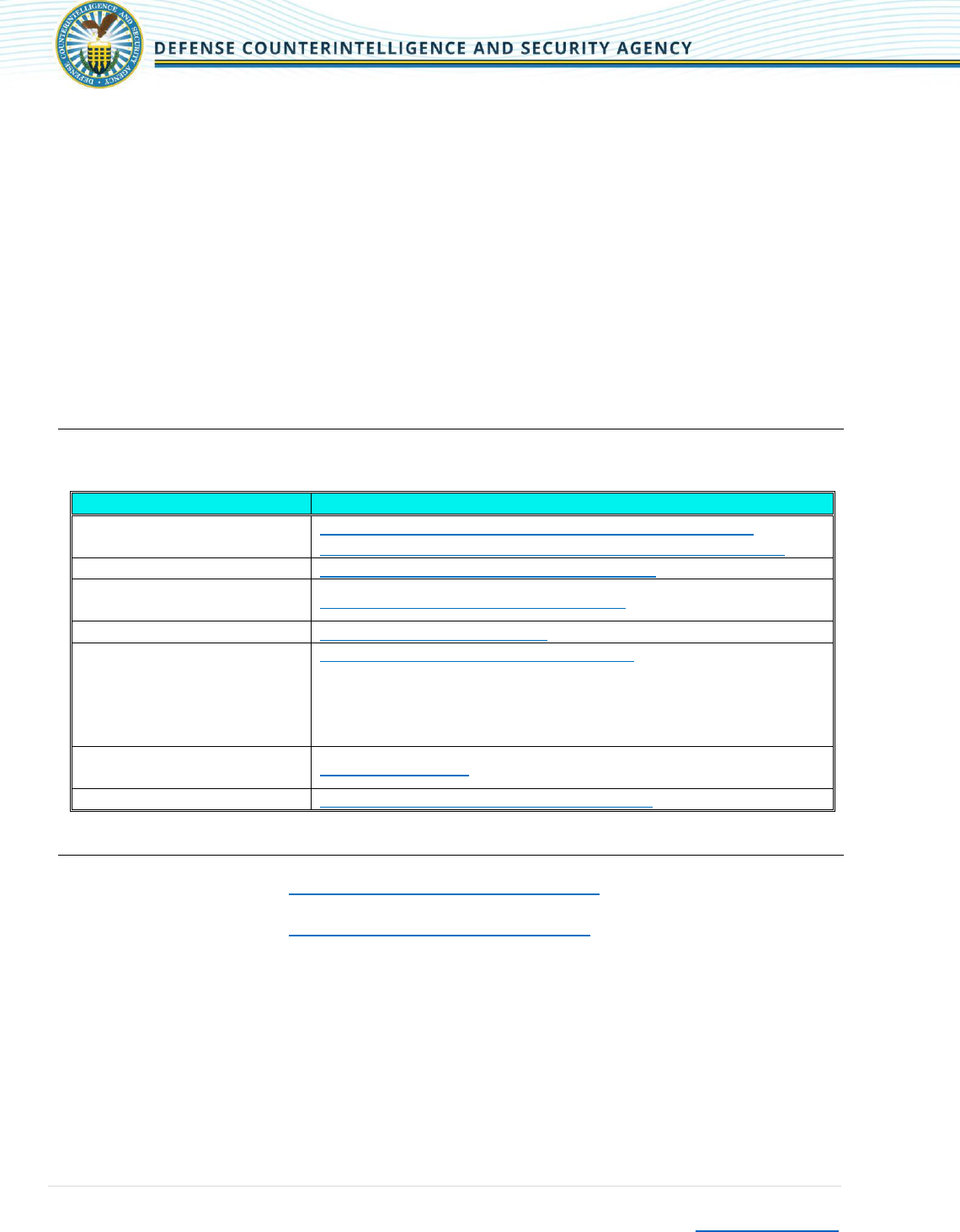
Defense Security Service
FCL Orientation Handbook
Page | 35
Return to Contents
Cyber Security Workforce Professionals
The IO cyber security workforce is composed of
Authorization Officials (AO)
Information Systems Security Professional Team Leads (ISSP TL)
Information Systems Security Professionals (ISSP)
The DAAPM contains the specifics on roles and responsibilities for each of these billets. Additionally, the Industry
cyber security roles and responsibilities for RMF process support are contained in the process manual. The roles
are
Information System Security Manager (ISSM)
Information System Security Officer (ISSO)
Alphabetized NISP RMF Resources
The following resource links are provided:
Resource
Location
DCSA Assessment and
Authorization Process Manual
https://www.DCSA.mil/Portals/69/documents/io/rmf/DCSA_
Assessment_and_Authorization_Process_Manual_Version_2.0.pdf
DISA eMASS Training
https://rmfks.osd.mil/rmf/Pages/default.aspx
DoD Cyber Awareness
Challenge
https://iase.disa.mil/eta/Pages/index.aspx
NISP eMASS
https://emass-nisp.csd.disa.mil/
NISP eMASS Job Aids
https://www.DCSA.mil/ma/ctp/io/nao/rmf/
1. Go to NISP eMASS Information and Resource Center Diagram
2. Click on Training
3. eMASS Training Resources appear below.
NIST Computer Security
Resource Center
https://csrc.nist.gov/
RMF Knowledge Service
https://rmfks.osd.mil/rmf/Pages/default.aspx
Questions and Concerns
DAAPM Questions contact: DCSA.quanticoDCSA-hq.mbx.o[email protected]
NISP eMASS Questions contact: DCSA.quantico.DCSA.mbx.emass@mail.mil
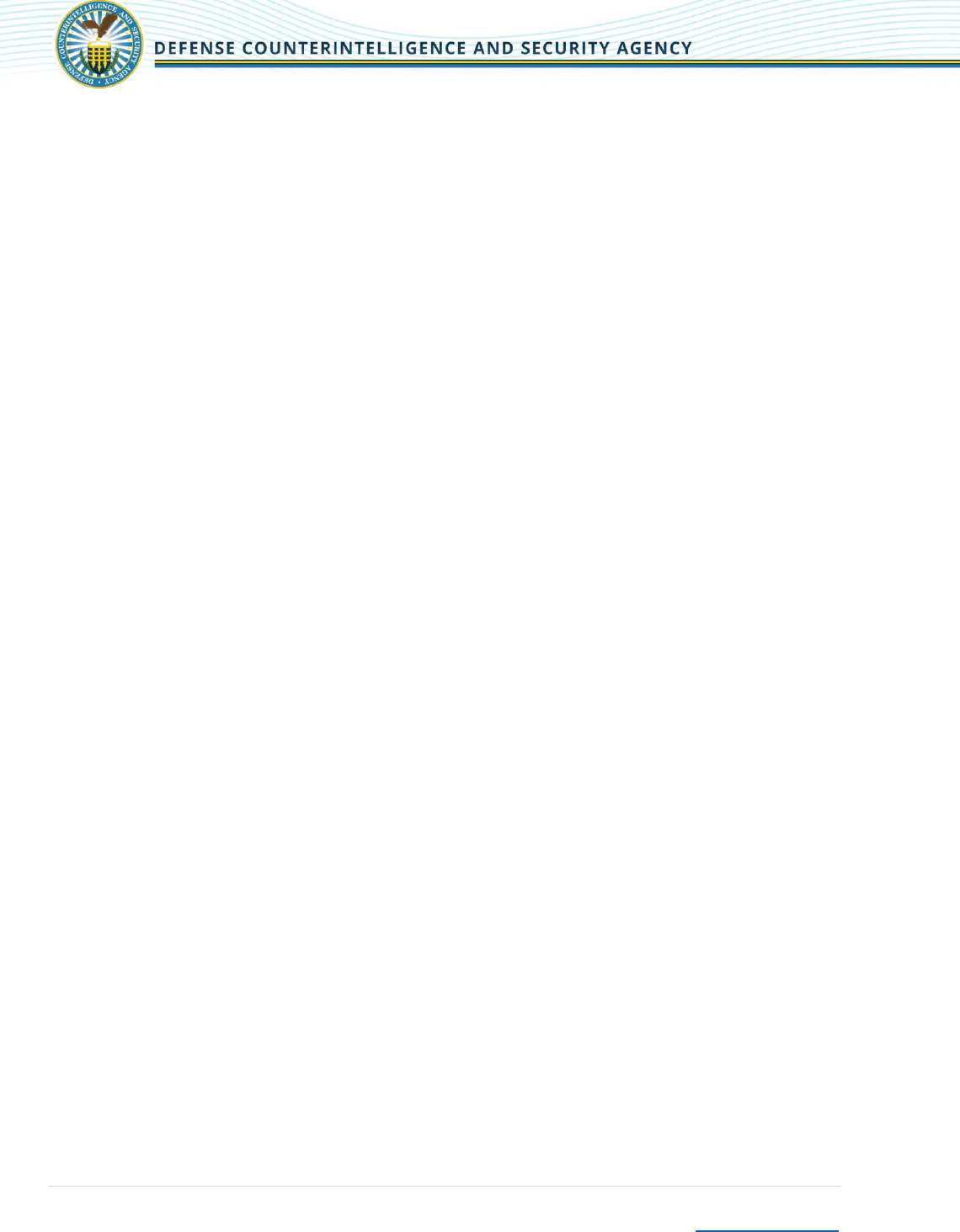
Defense Security Service
FCL Orientation Handbook
Page | 39
Return to Contents
Appendix E: FCL Package Submission Checklist
This checklist is not all inclusive for the successful submission of an FCL package. This checklist is intended to assist
facilities in avoiding common reasons for rejection of the FCL package.
Basic Information and Documentation
1. Please confirm all required documentation is provided for the appropriate business structure.
2. Please do not “package” the documentation and upload under multiple document types
3. On the basic information tab, please confirm the business structure selected is correct.
4. Please included all prior legal company names and prior legal addresses.
5. Please confirm the principal place of business listed in SAM, the Secretary of State website(s), and provided
business documentation match or the discrepancy is addressed.
6. Please provide documentation reflecting business structure conversion, if appropriate.
7. Please confirm the facility is registered to conduct business within the state even if organized in different
state (i.e. principal address/located in Virginia, but organized in Delaware).
8. All shares of stock accounted for, including un-issued shares.
9. The legal organization chart should reflect the owners/members of the facility. Please include (but not
limited to): name, percentage of ownership, membership, or stocks held, and all appointed titles; for
companies include address and CAGE code if applicable.
SF-328 and DD-441
10. On the SF-328, please provide detailed replies to any questions answered “yes.”
11. SF-328 & DD-441 signed by the Senior Management Official, witnessed and dated the same day.
12. On the SF-328 & DD-441, the titles for Authorized Contractor Representative and the certifying official match.
13. On the DD-441, please ensure is date field is blank on the first page.
14. On the DD-441 signature block, enter the facility name on the “typed name of contractor entering
agreement” line.
KMP Information and KMP List
15. Please confirm the Personal Identifiable Information (PII) (spelling of names, Social Security Number, date of
birth, etc.) is correct.
16. Please provide the FSO and ITPSO appointment letter(s) confirming the individual(s) is an employee of the
company and US citizen as required per NISPOM 2-103c.
17. Please provide the FSO appointment date on the KMP list.
18. On the KMP list, please indicate each individual once and include all roles and titles associated with that
individual.
19. Please confirm the provided roles and titles indicated are supported by the documentation (Operating
Agreement/By-laws etc).
20. Please identify any positions required by the business documents and are currently not filled are listed as
VACANT.
21. Please confirm one Senior Management Official (SMO) is identified on the KMP list. The SMO is NOT a
position which can be appointed, but is determined based on the company’s governance documents. (NOTE:
there are some rare circumstances in which there may be more than one SMO).
22. Please provide the exclusion resolution for any non-required KMPs (unless access to classified information is
required in support of the contractual work).
23. Ensure Proof of citizenship for all required KMPs is uploaded to the FCL package.
24. Additional companies are not included on the KMP list. In cases of a JV, a company (member) will not be
added to the KMP list, rather the company’s representative will be added to the KMP list.
25. Please provide the documentation reflecting the election/appointment of the Officers/Board Members, etc.
